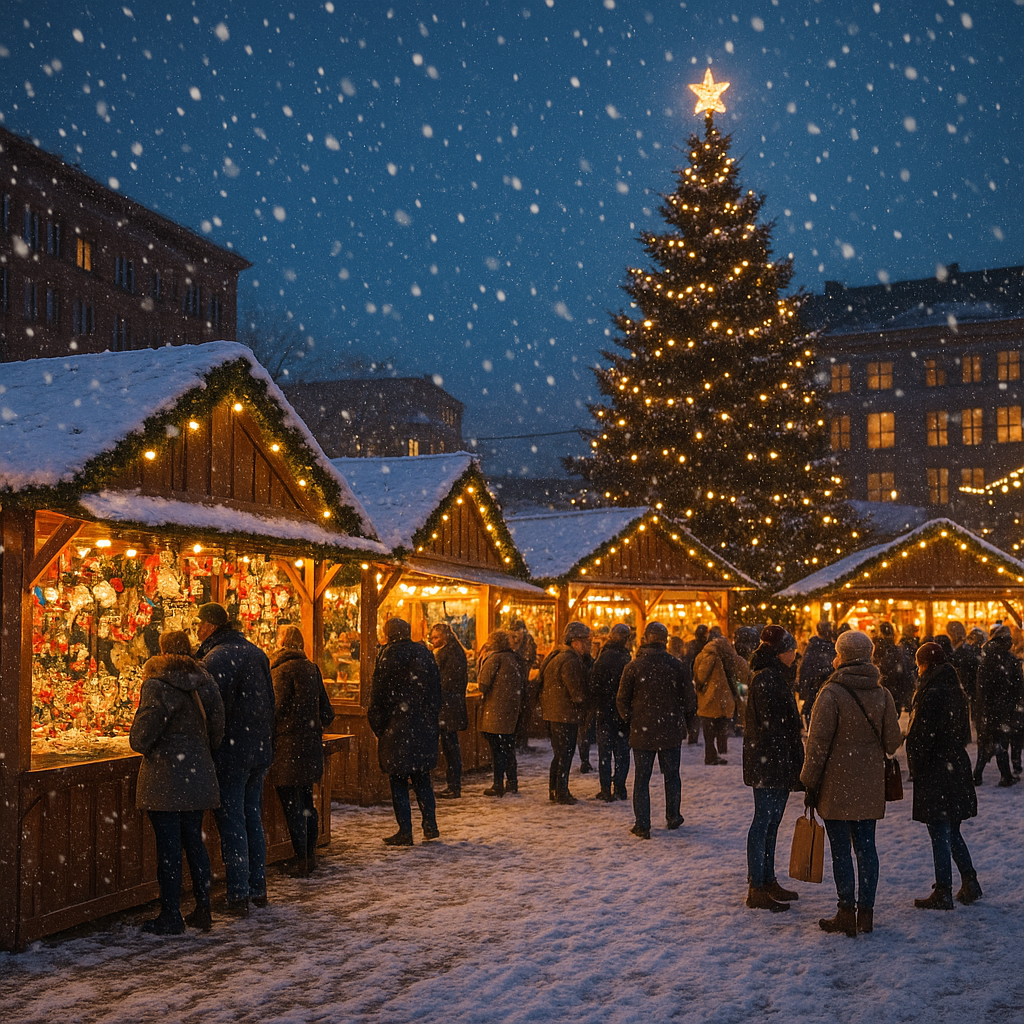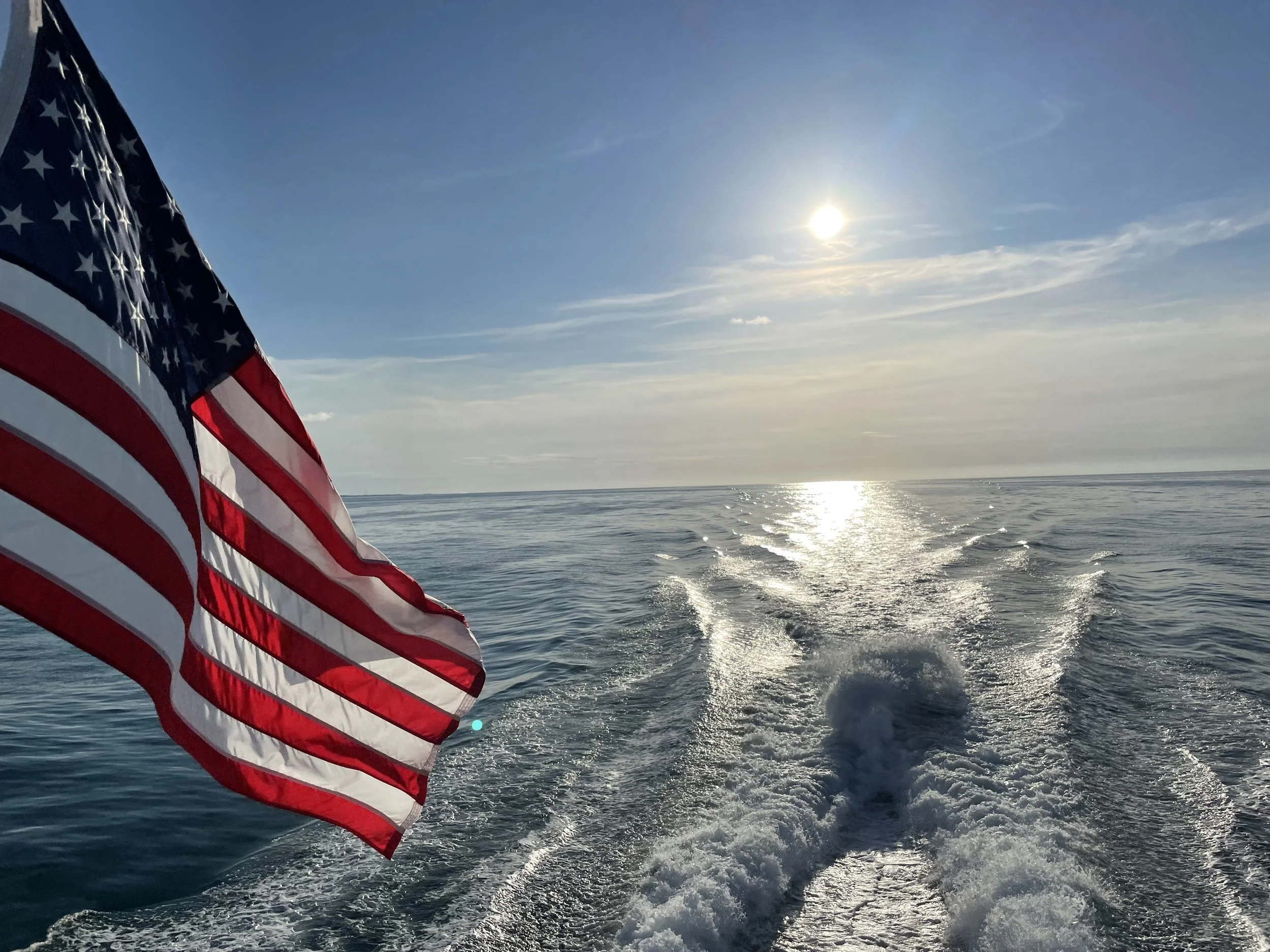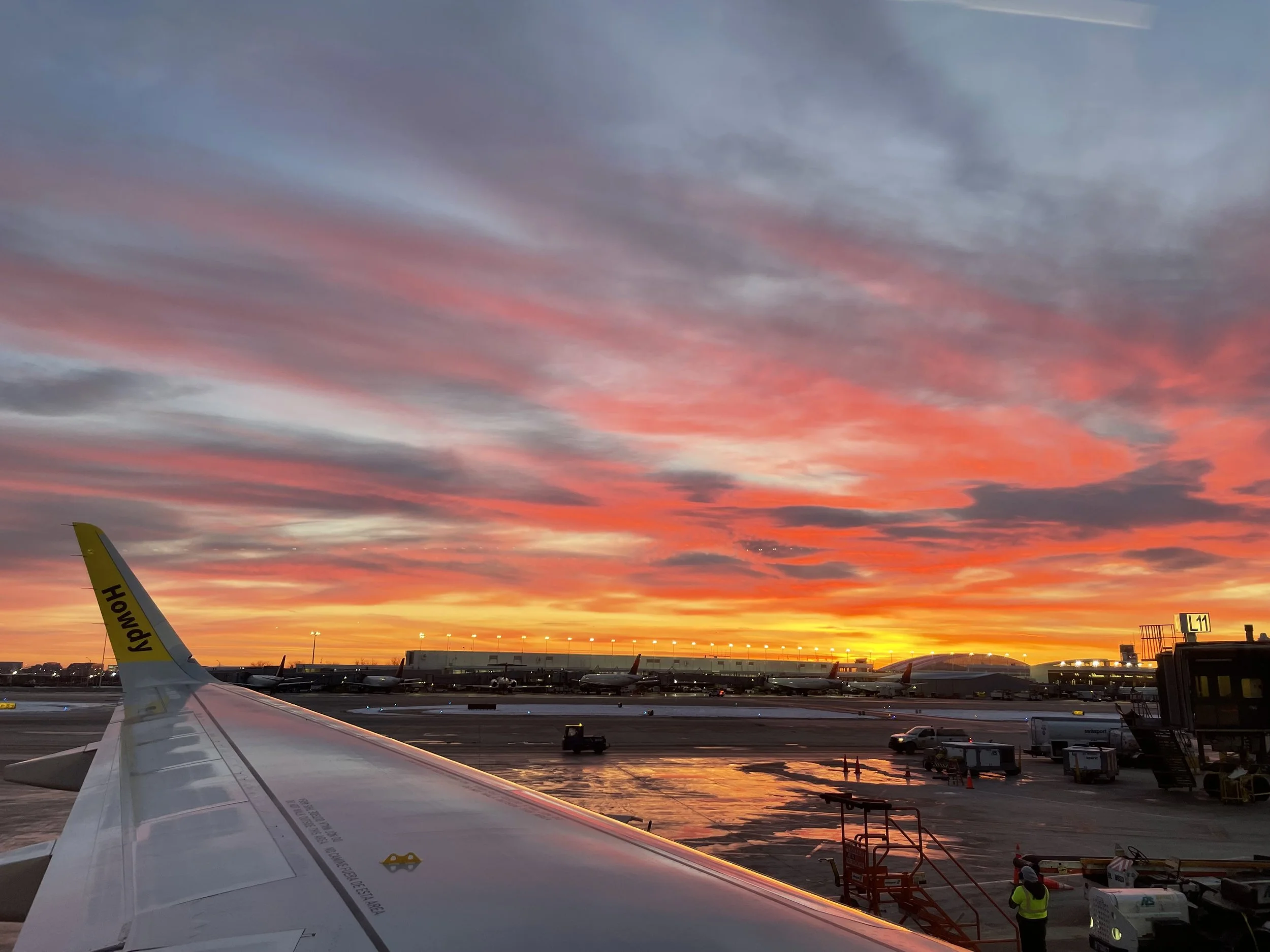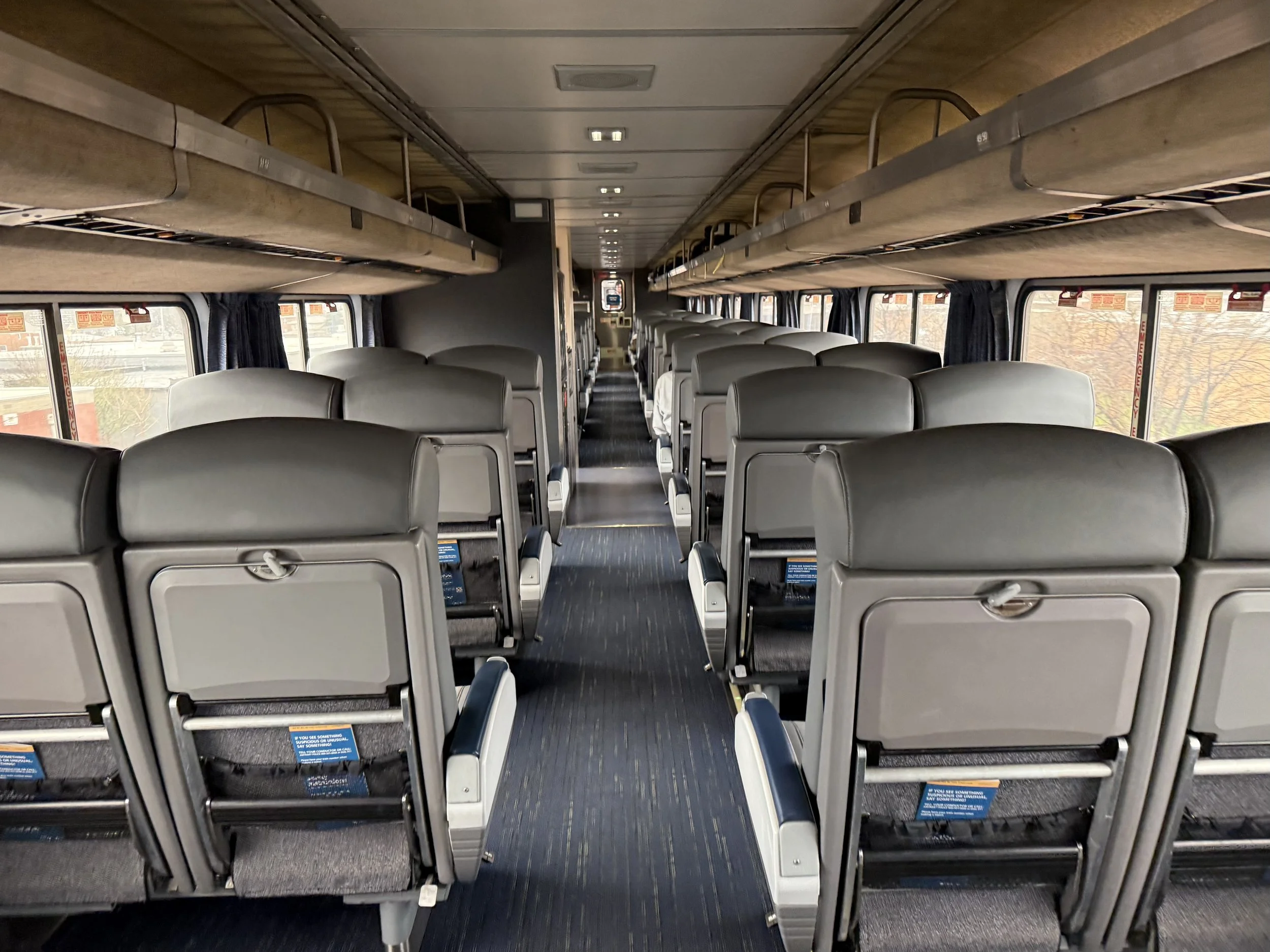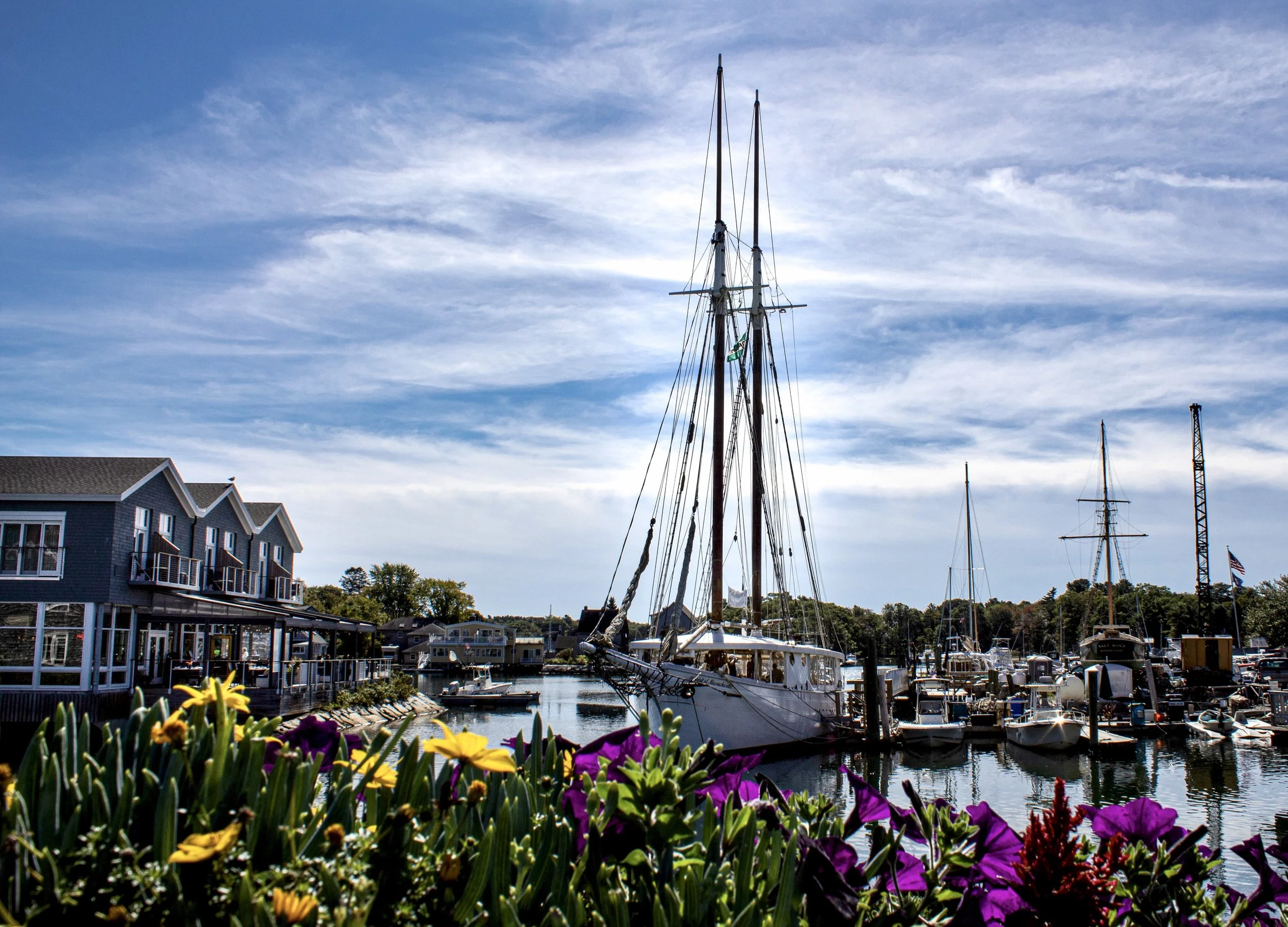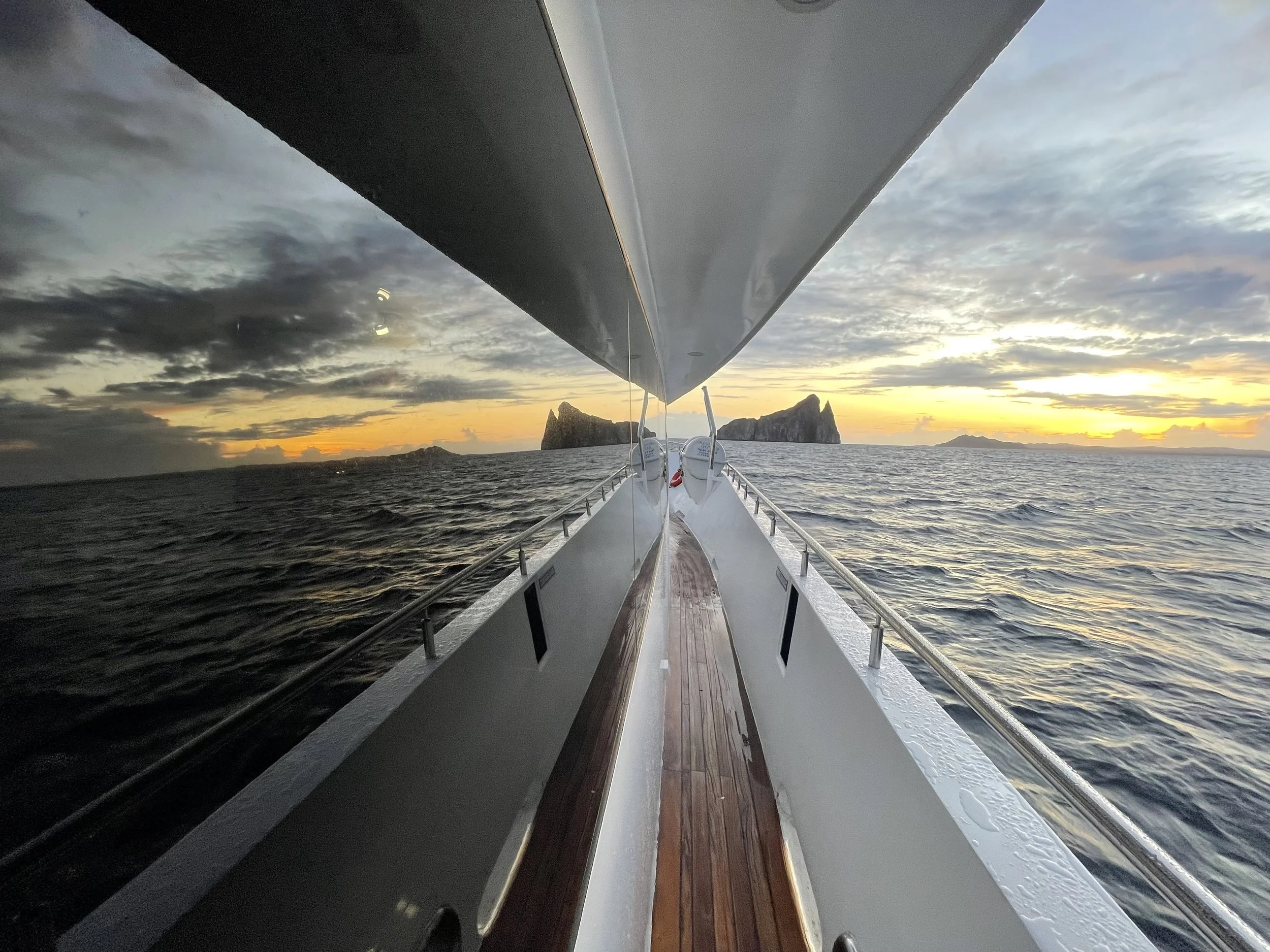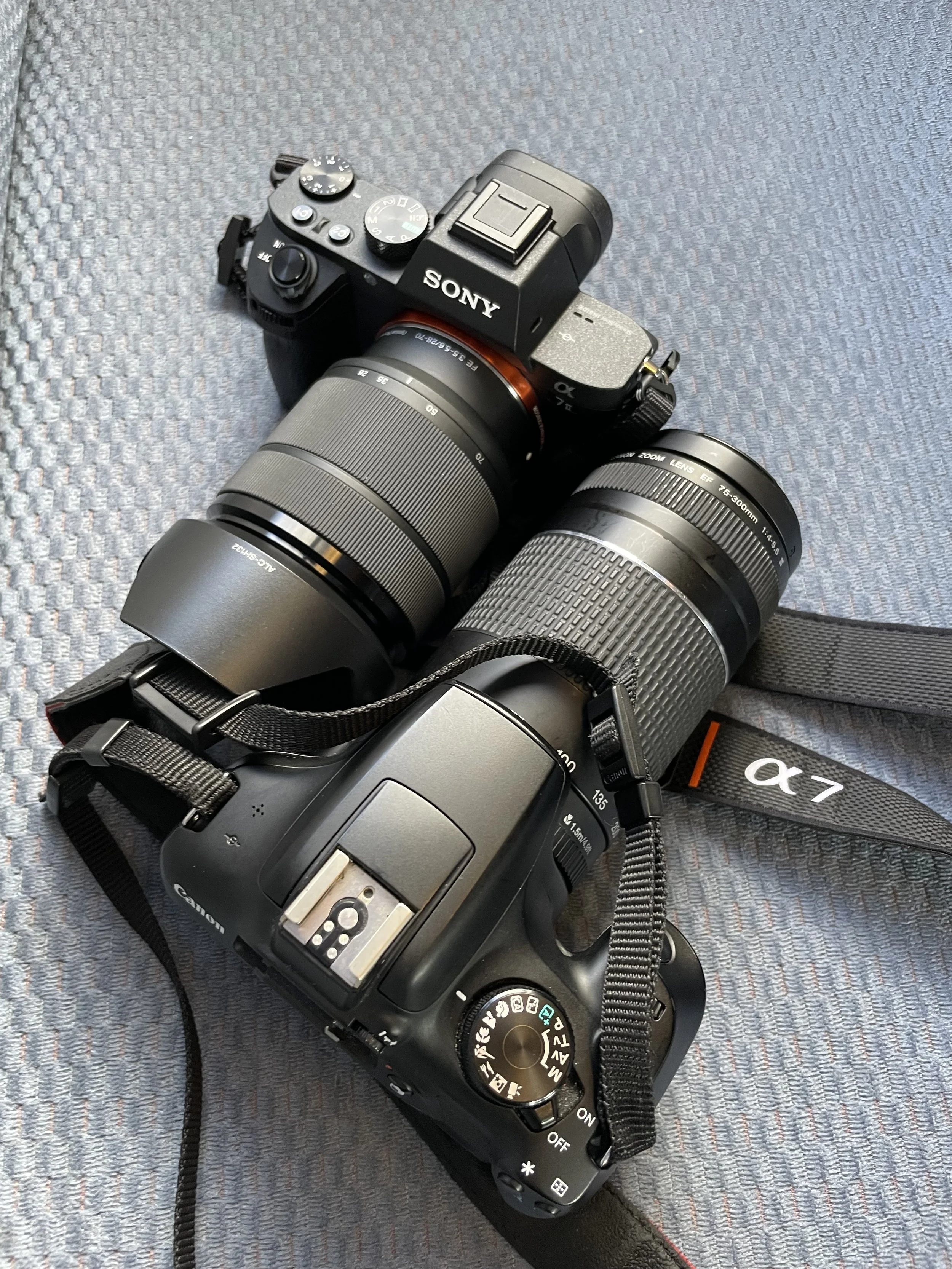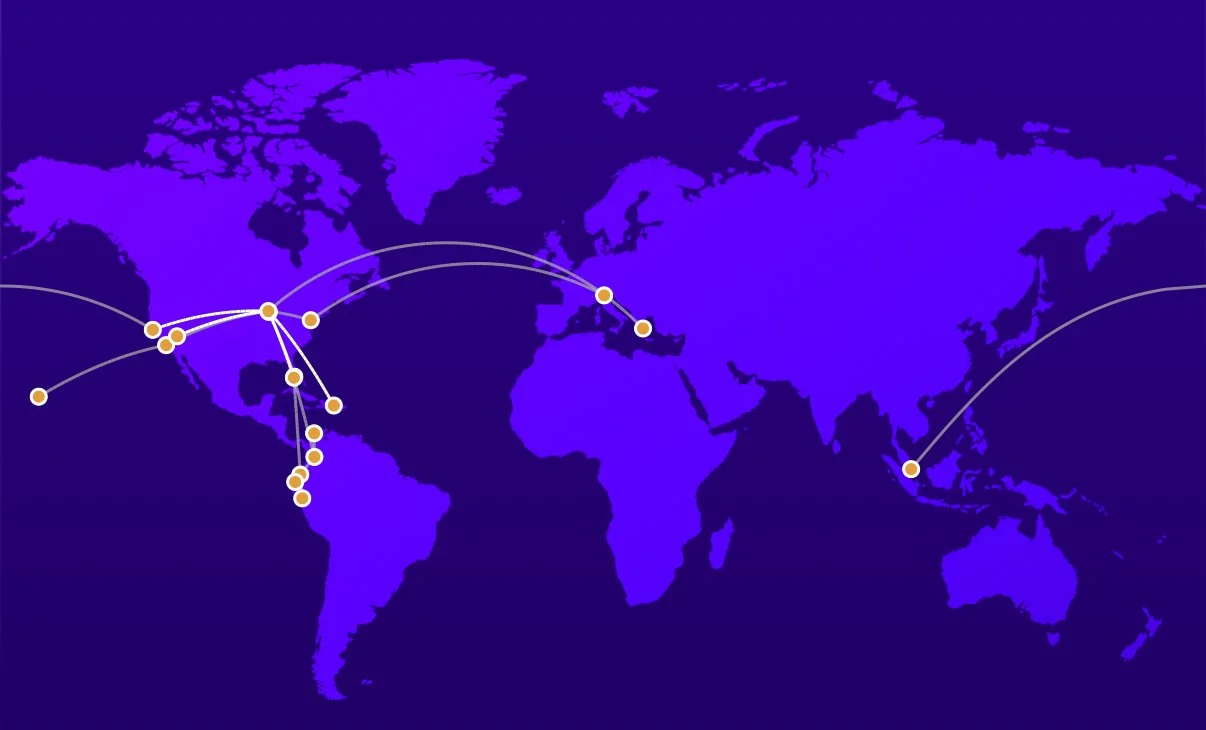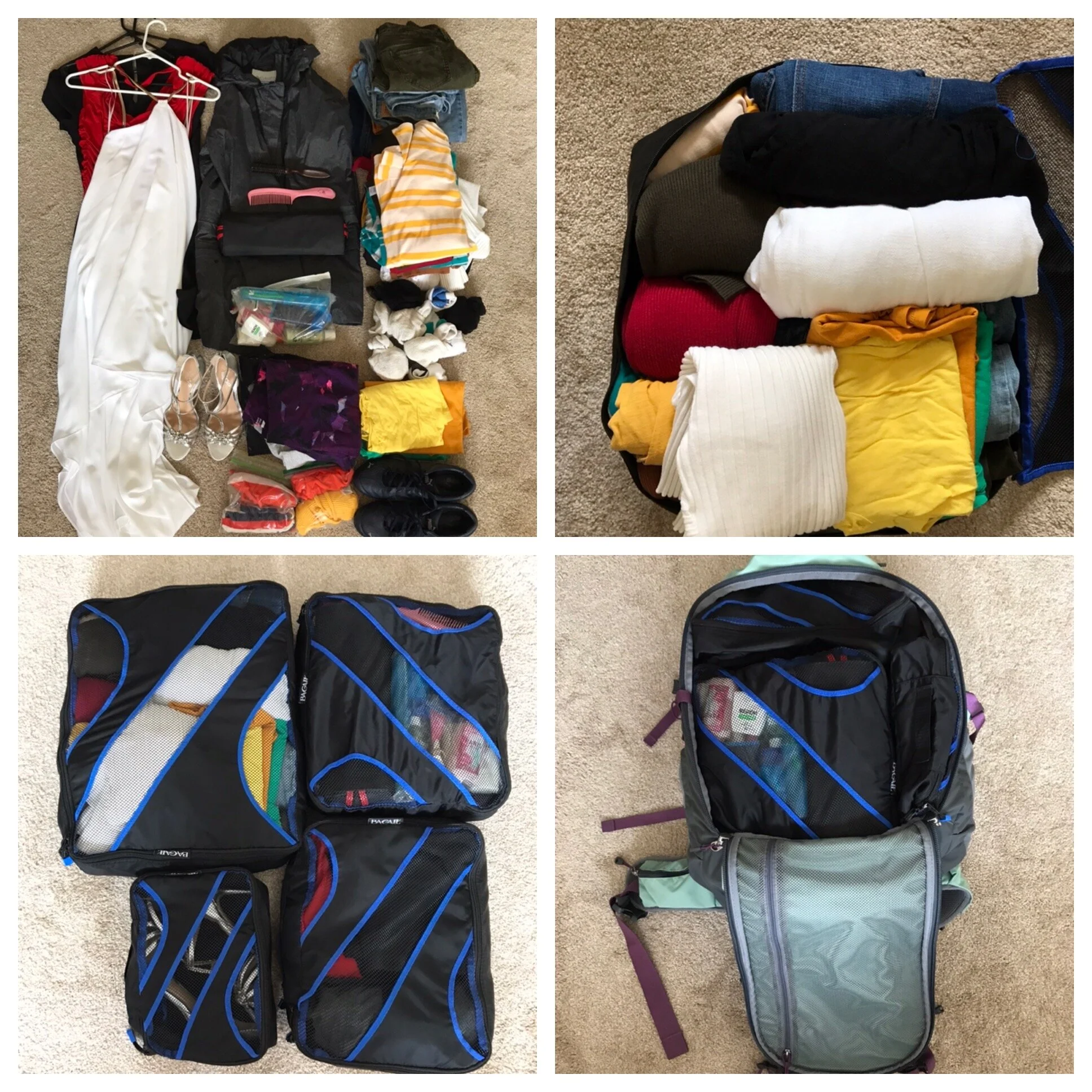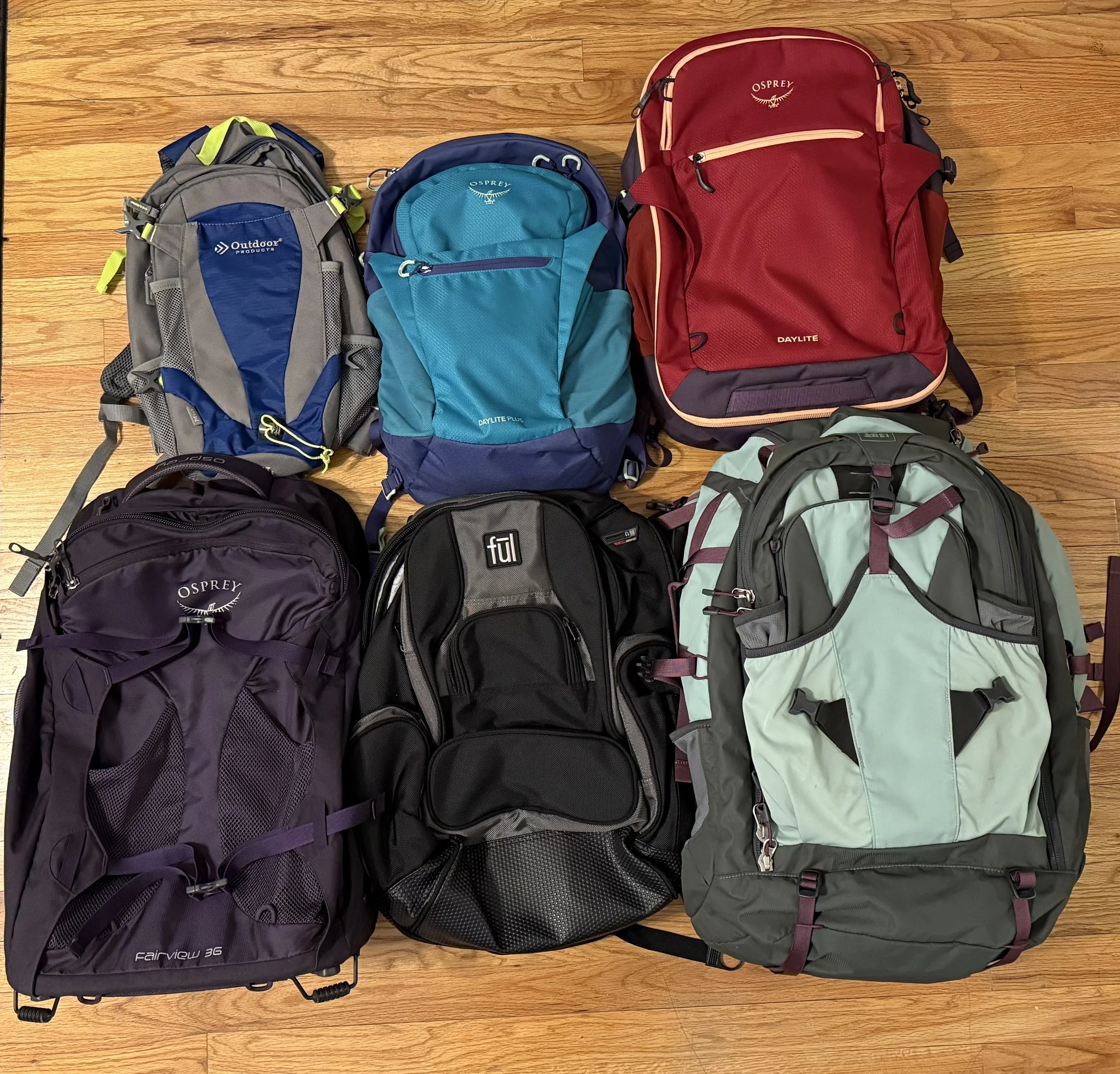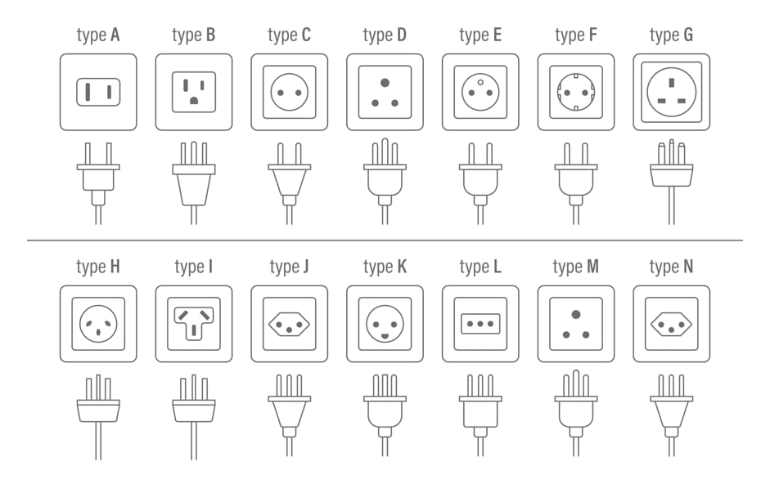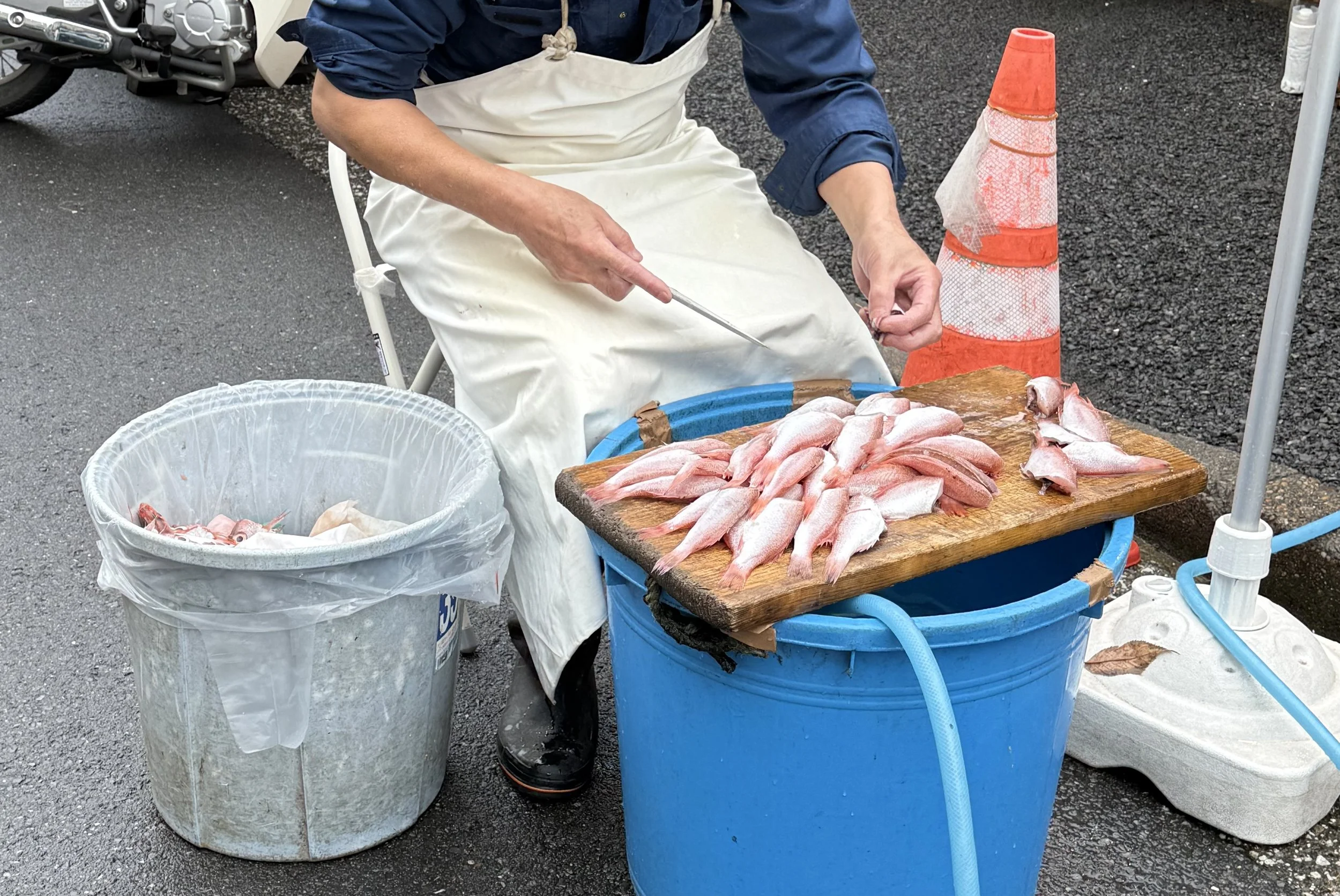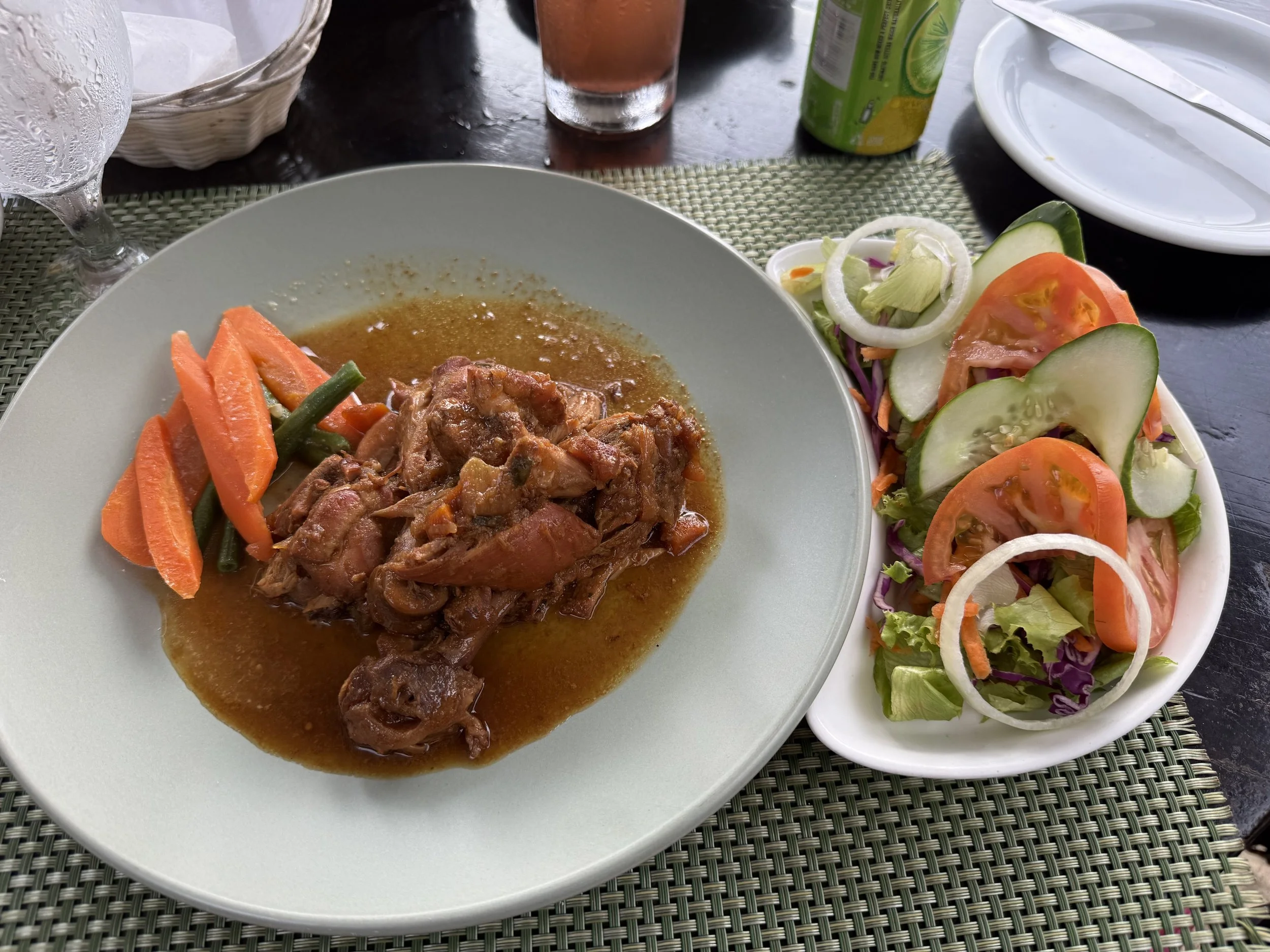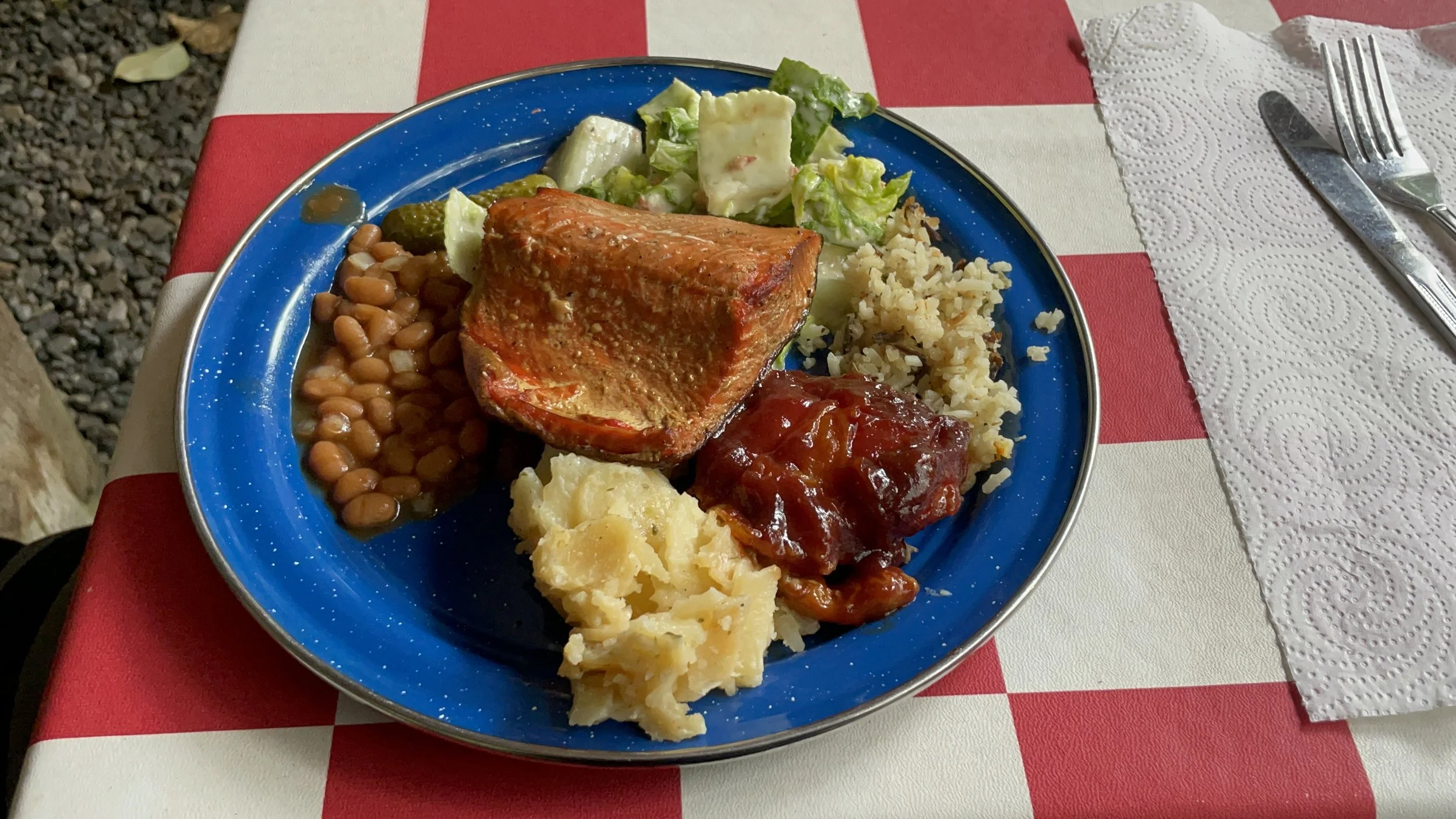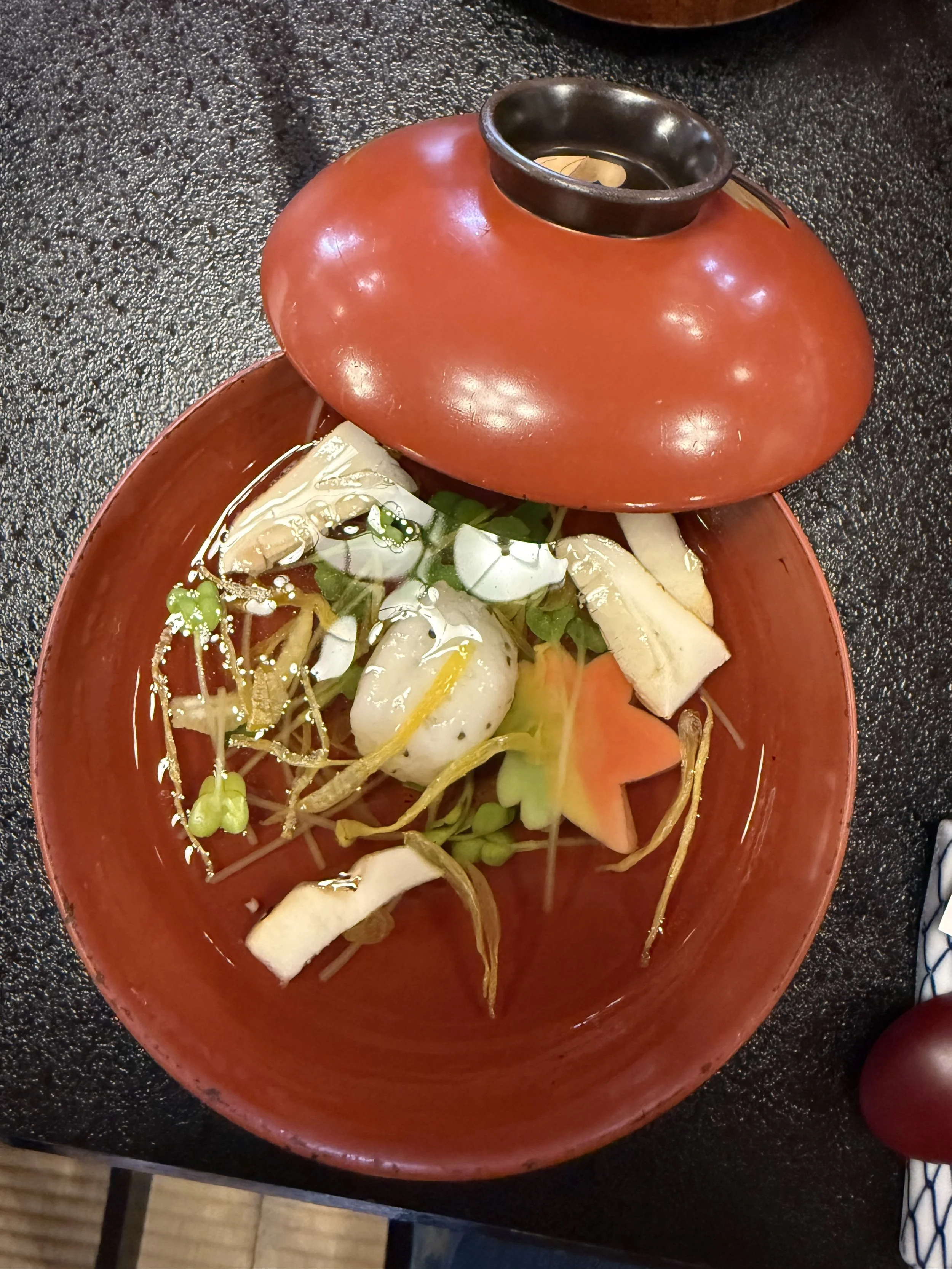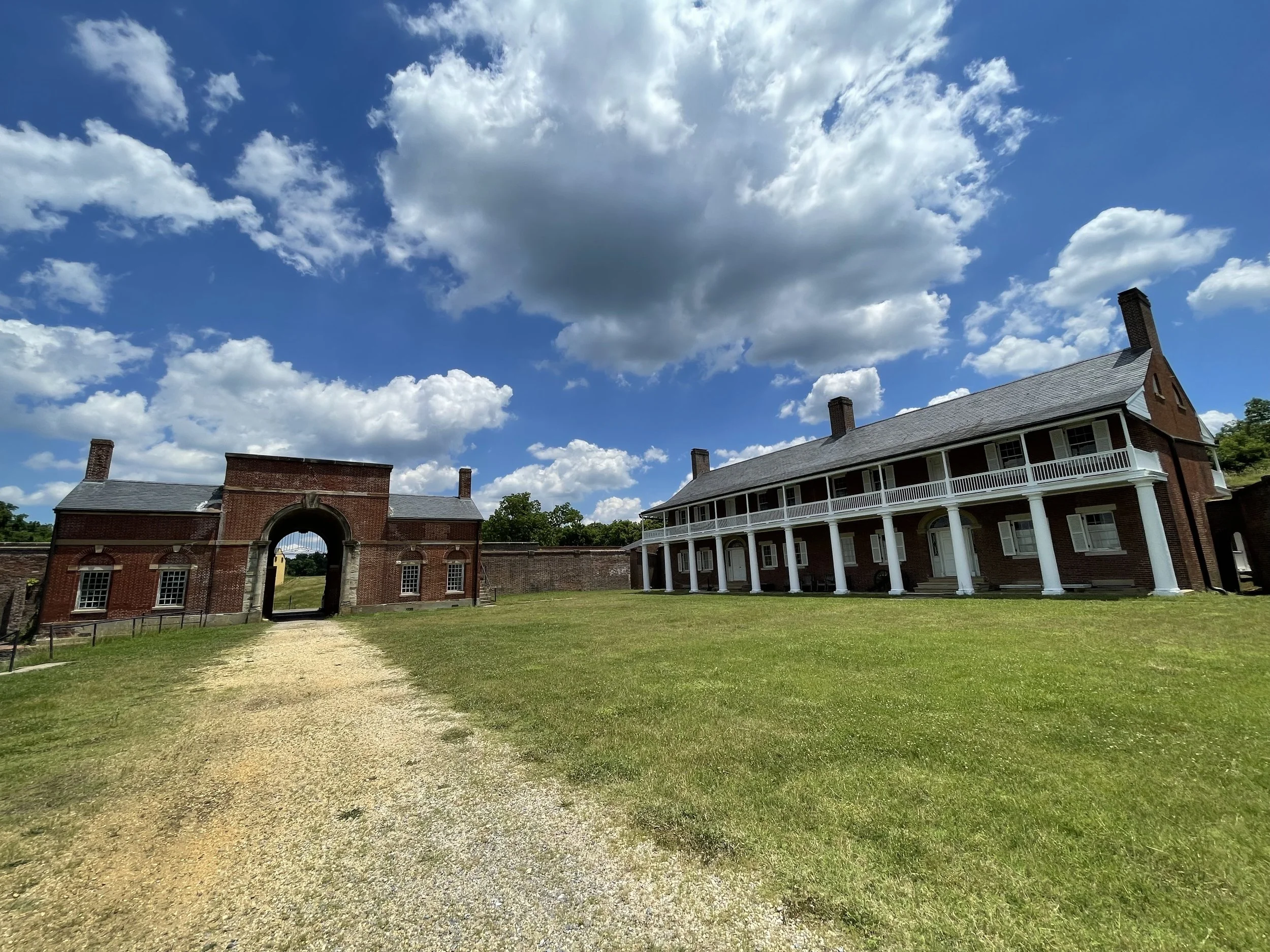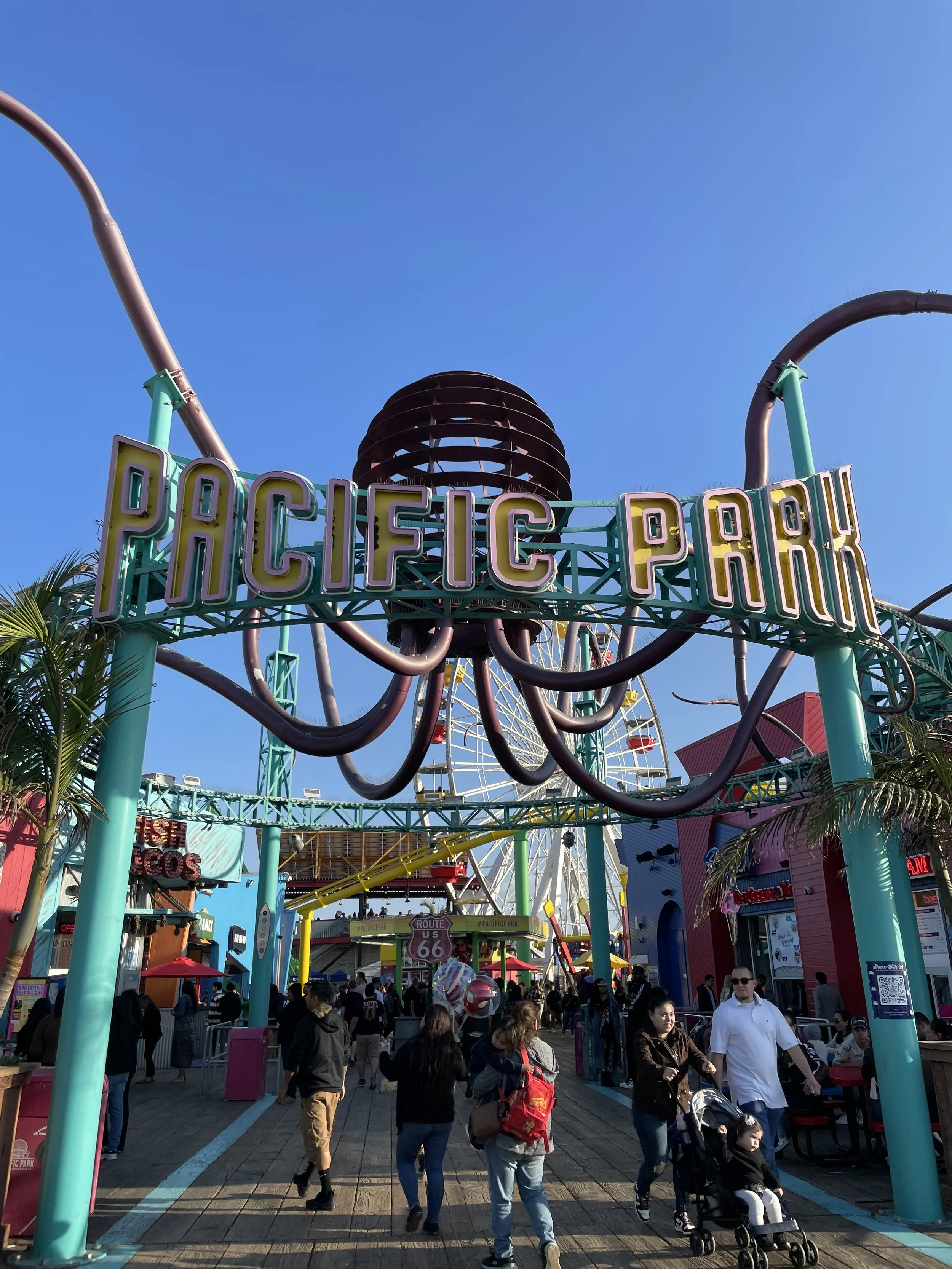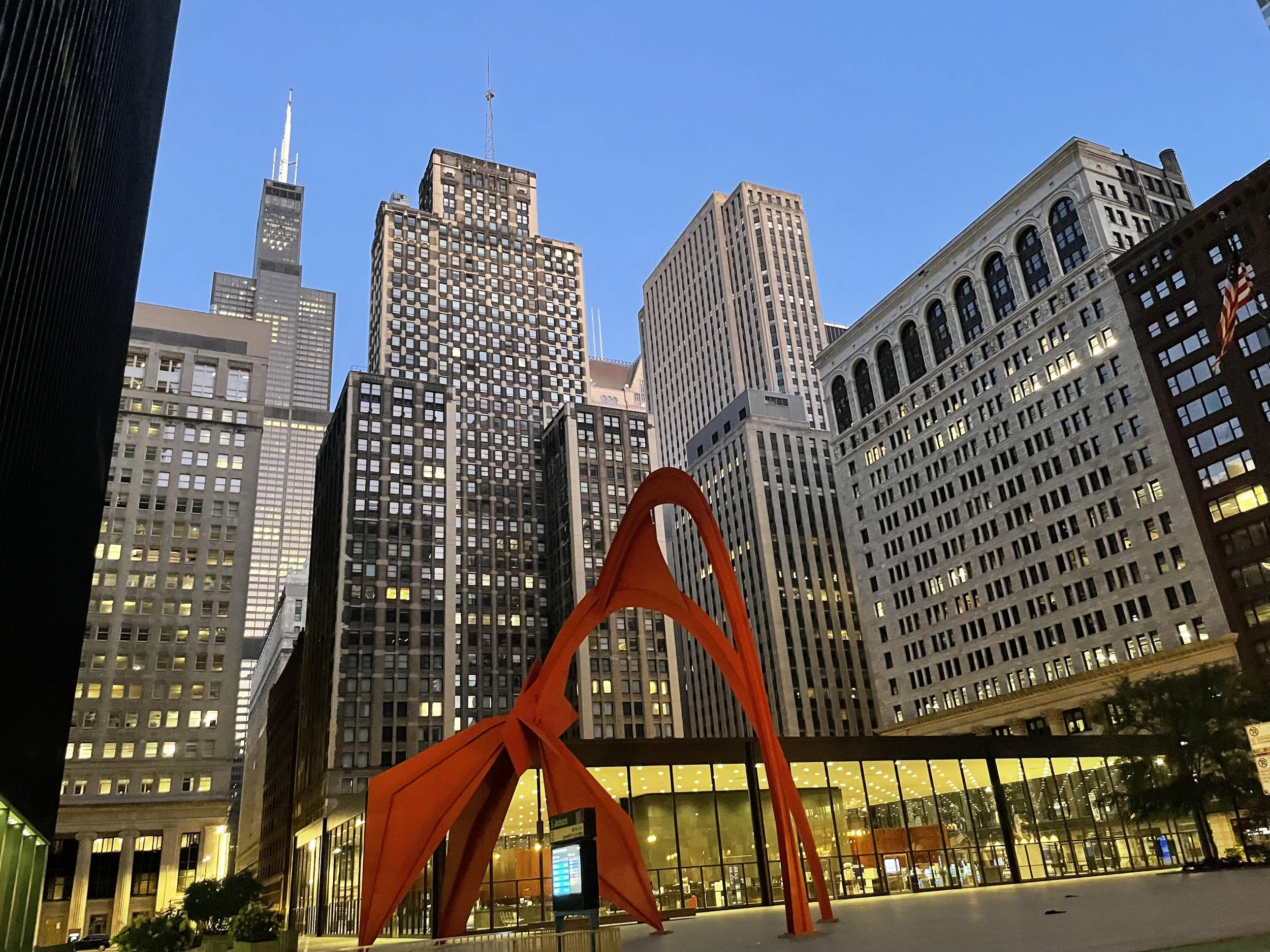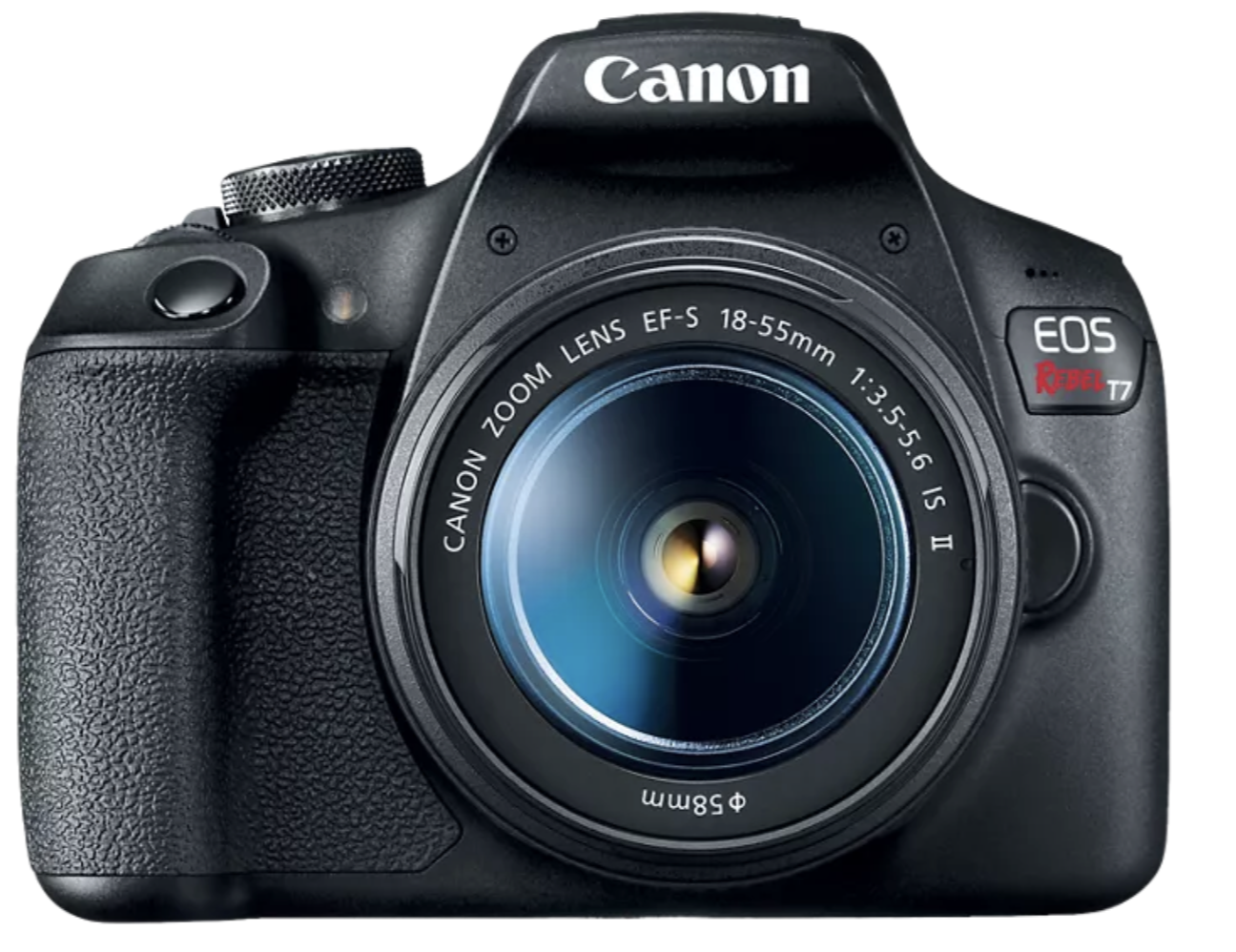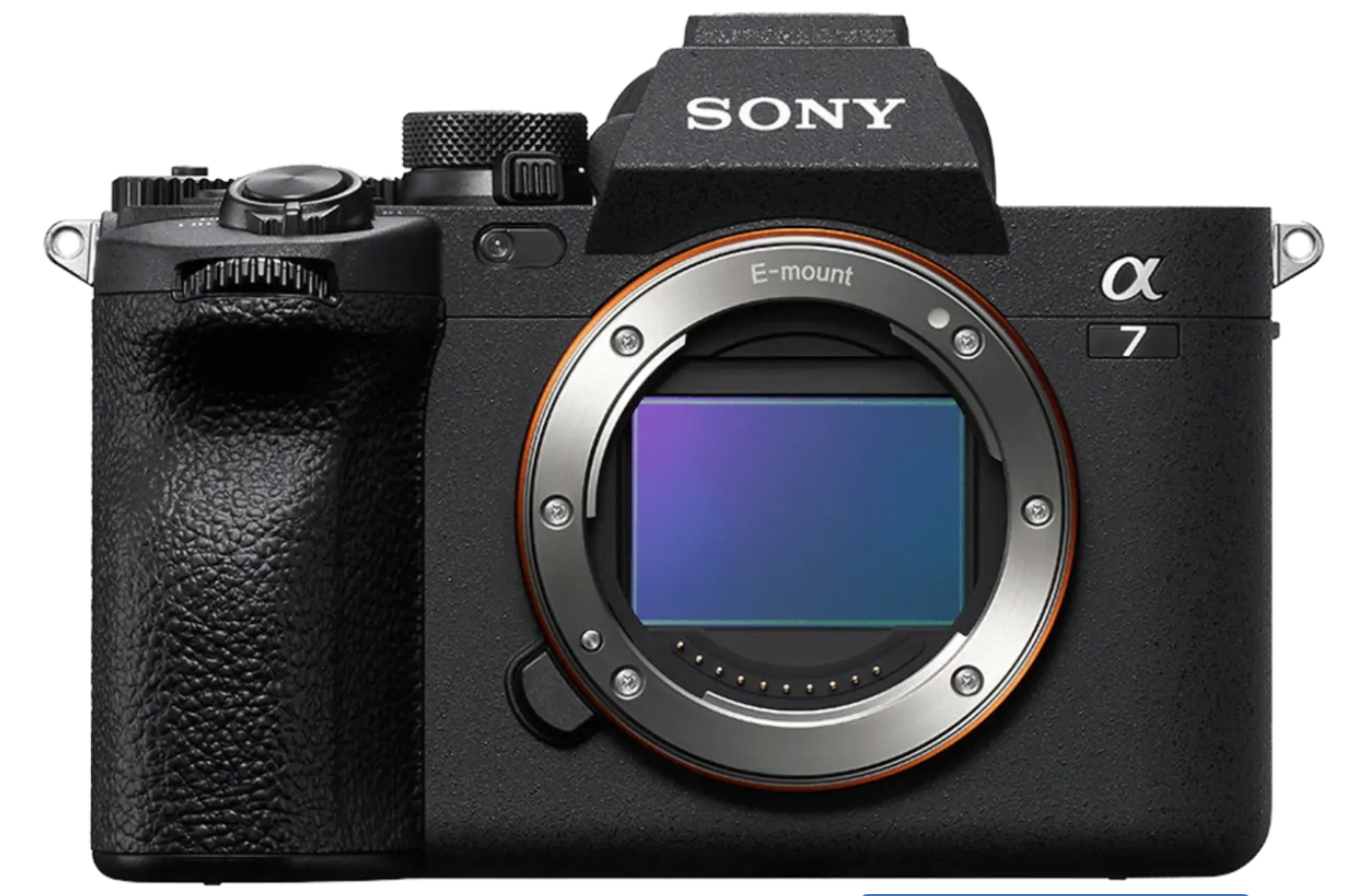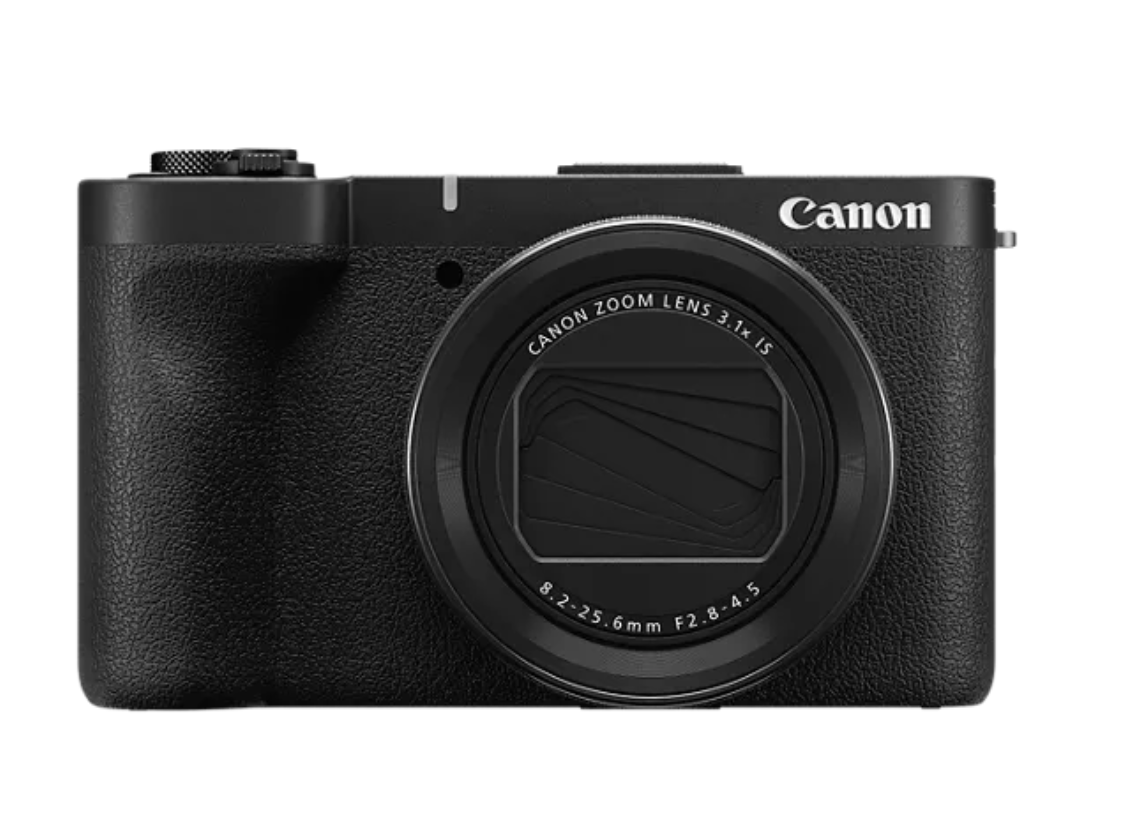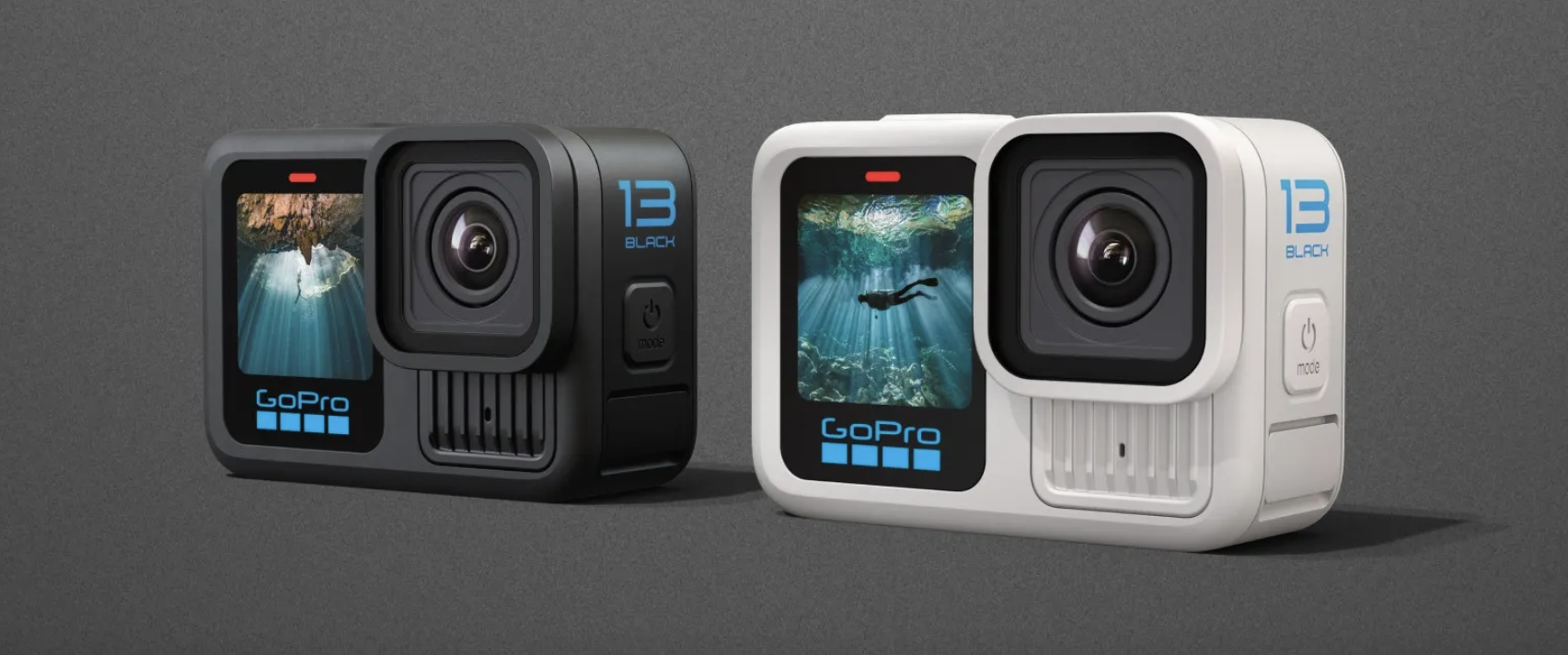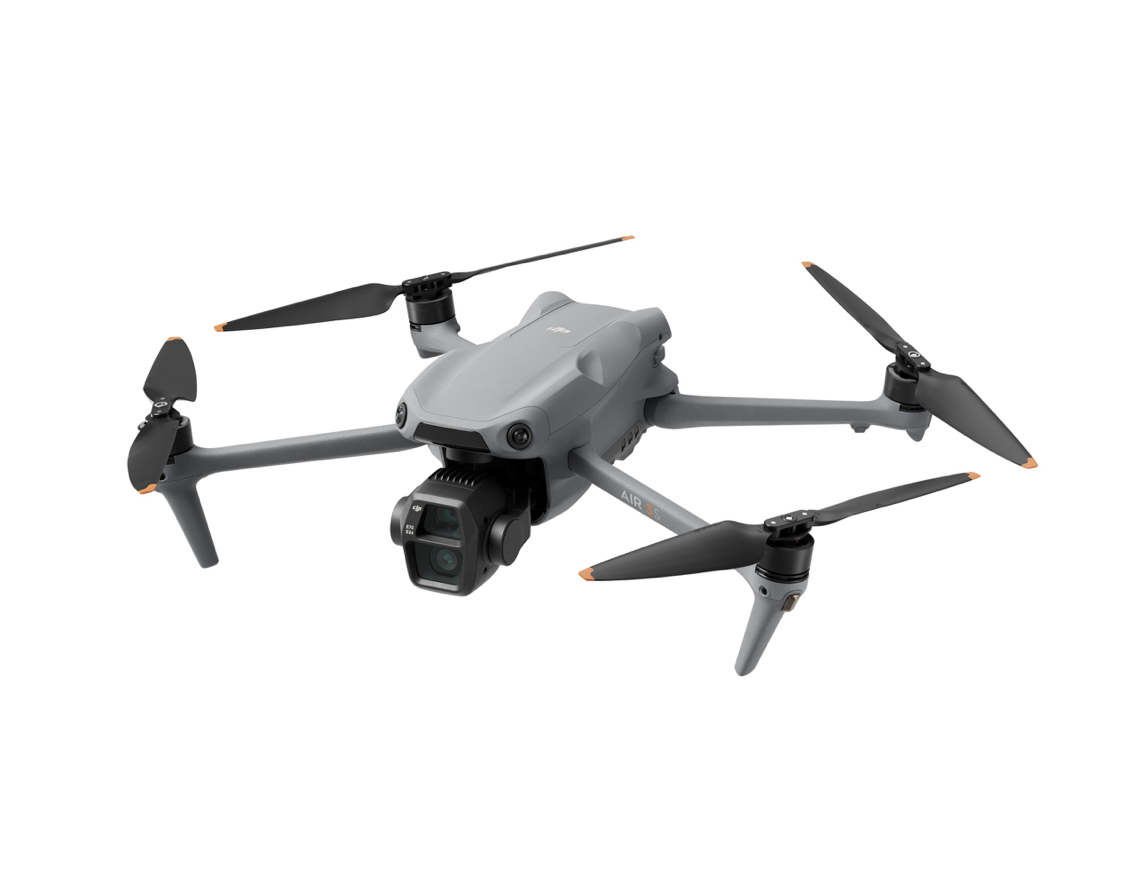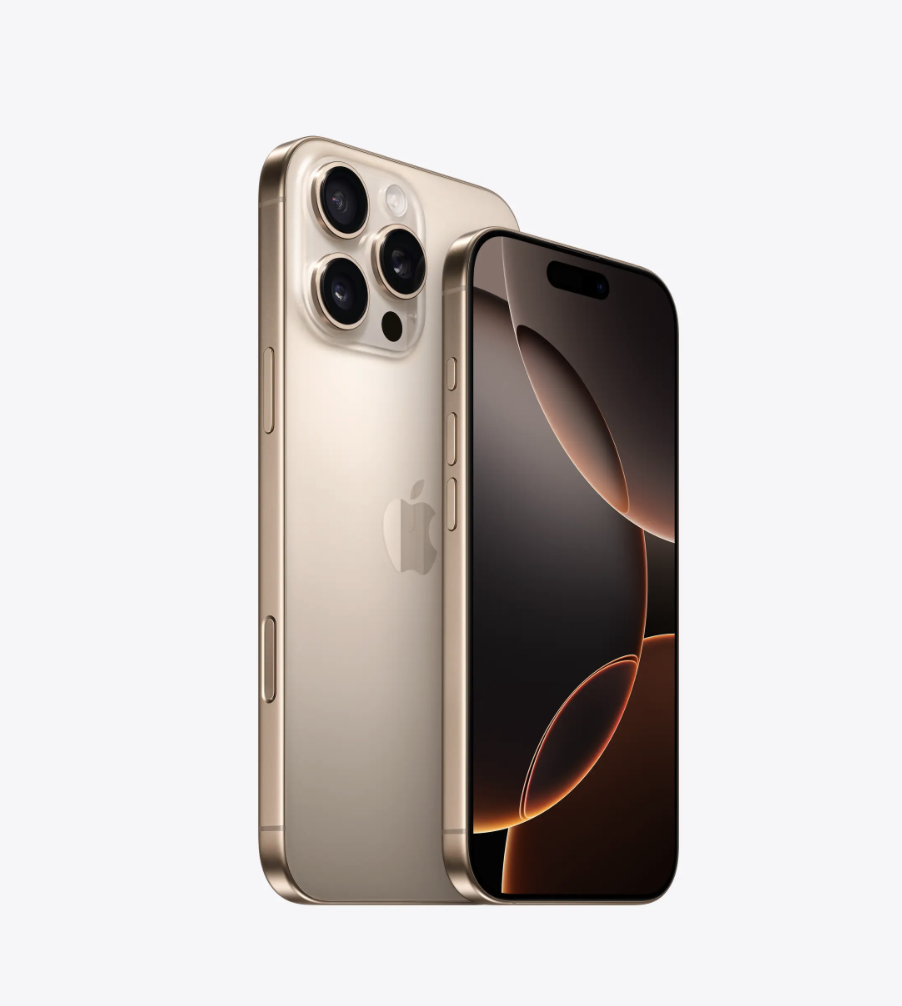Traveling With Pets: What You Need To Know
For many of us, our pets aren't just companions, they're family. So, when you're dreaming up your next adventure, it's totally understandable that you want to bring your furry, scaly, or feathered friend along for the ride!
The good news is that traveling with a pet can be a surprisingly smooth experience, but it takes preparation. This friendly guide breaks down the need-to-know rules for every part of your trip, from what documents to pack to how different transport modes handle animals. Get ready to plan clearly and confidently for your next pet-friendly getaway!
Which Pets Can Travel
Most transportation companies accept only a narrow list of household pets, and those policies are not consistent across airlines, trains, ferries, or international borders.
Dogs and cats are the most commonly accepted companions.
Some operators may also allow small rabbits, domestic birds, or ferrets, though this isn’t guaranteed.
More specialized pets for example, reptiles, amphibians, rodents, exotic mammals, and farm animals generally cannot travel on commercial transportation even if they can legally cross borders under certain conditions.
Because acceptance varies so widely, the safest approach is to check the specific travel company’s rules before you book anything.
Domestic vs. International Travel
Traveling with a pet inside your home country is usually much simpler.
Most domestic trips only require proof of vaccinations, a properly sized carrier or crate, and up-to-date ID tags or microchip information. There’s rarely a need for export or import documents.
International travel is more involved. Most countries require your pet to have an ISO-compatible microchip, a rabies vaccination given on a specific timeline, and an international health certificate issued shortly before travel. Some destinations—especially those with rabies-free status like Australia, New Zealand, Iceland, Japan, the United Kingdom, and Hawaii—have much stricter rules and may require long lead times or even quarantine.
If you are returning to the United States with a dog, be aware that CDC re-entry rules have recently become stricter. These rules cover microchipping, age requirements, vaccination timing, and import documentation. Always check official government guidance early in your planning process.
Travel by Air, Land, and Sea
Flying With a Pet
Air travel has the most detailed rules, and they vary by airline. Only small pets that can fit under the seat may fly in the cabin, and they must stay inside an airline-approved soft carrier for the entire flight. If you see a large dog in the cabin, it is almost always a trained service dog. Service dogs are allowed regardless of size because they perform tasks for passengers with disabilities. Emotional support animals no longer qualify as service animals and must follow the standard pet policy.
Pets that are too large to fly in the cabin may travel in the cargo hold if the airline allows it. Cargo travel requires an airline-approved hard-sided crate, proper labeling, ventilation, and compliance with breed and temperature restrictions. Many airlines suspend pet cargo travel during extreme heat or cold. When possible, a direct flight is the safest and least stressful option.
Airlines expect owners to provide accurate documentation and ensure their pets are healthy enough to travel. Carriers must follow their published procedures, but they generally limit liability for stress, illness, or issues not caused by mishandling.
Train Travel
Train rules vary from country to country. In the United States, Amtrak allows small dogs and cats on many routes as long as they stay in a carrier and meet size and weight limits. In Europe, dogs and cats are commonly accepted on trains, though larger dogs may require a ticket and may need to be leashed or muzzled. Most train systems do not accept exotic pets. Regardless of the route, owners are expected to manage their pets’ behavior and prevent disruptions to other passengers.
Car Travel
Traveling by car gives you the most flexibility. Pets should be safely secured in a crate or seat-belt harness, especially for long distances. Bring plenty of water, any medications your pet needs, and supplies for breaks along the way. Never leave a pet alone in a parked car, especially in warm weather. If your drive involves crossing an international border, all the same documentation requirements still apply.
Ferries, Boats, and Cruises
Short-distance ferries are often pet-friendly, allowing dogs and cats to stay in the vehicle or in designated onboard areas. Long-distance ferries may have kennel spaces or specific zones where pets are allowed, and international crossings may require documentation.
Most cruise ships do not allow pets at all. Trained service dogs are the exception, and the Queen Mary 2 is the only major ocean liner with a formal kennel program that accepts dogs and cats. On any vessel, owners are responsible for feeding, comfort, and proper documentation.
Documents You May Need
The paperwork required for pet travel depends entirely on where you’re going. For domestic trips, you may only need proof of vaccination and a compliant carrier. For international travel, requirements often include rabies certificates, microchip documentation, health certificates, USDA endorsements (for U.S. travelers), import permits, and proof of parasite treatments. It’s best to keep both printed and digital copies of all documents so you can provide them quickly when needed.
Responsibilities: What’s Yours and What’s The Carrier’s
Pet owners are responsible for making sure their animal is healthy, properly vaccinated, and traveling in an approved carrier. You must follow all breed, size, and weight rules and be prepared to manage your pet’s behavior throughout the journey.
Transportation companies are responsible for following their published procedures and providing safe conditions in designated pet areas. They generally limit liability for complications caused by pet stress, health issues, extreme weather, or incomplete paperwork. For this reason, verifying all requirements ahead of time is essential.
Understanding Your Pet’s Needs
Not every pet is comfortable traveling, and that’s okay. Before deciding to take your pet with you, think about their temperament. A pet that becomes anxious in new situations, is sensitive to noise, or dislikes confinement may struggle with the demands of travel. Consider how well they handle being around strangers, children, or other animals. Age, medical conditions, or breed-related breathing issues can also make travel harder or unsafe.
Routine matters too. Pets who are crate-trained and accustomed to new environments tend to travel more easily, while pets who rely heavily on predictable routines may become stressed.
When Bringing Your Pet Isn’t the Best Option
If your pet is likely to be stressed or unsafe during travel, there are good alternatives. Boarding facilities can work well for social pets who enjoy being around other animals. In-home pet sitters are a better fit for pets who prefer familiar surroundings or older pets who need a calm space. Friends or family members who already know your pet can also be a great option. For animals with medical needs, veterinary boarding ensures trained professionals are available if anything arises.
Recap
Travel with a pet always requires extra planning. Book early, since pet spaces can fill quickly. Check temperature restrictions for flights and look up pet relief areas at airports before you arrive. Keep documents organized and backed up digitally. Most importantly, confirm the rules for your destination and transportation company close to your travel date—policies change often. Never assume your pet will be accepted without checking the details first.
Best Christmas Markets in the U.S.A
While many of us would love to head to Europe and spend a few days walking through the German and French Christmas markets, that is not always possible. Germany, France and Austria are especially known for their long-standing market traditions, with wooden stalls, regional foods and handmade crafts that show up every winter. Several cities in the United States make a genuine effort to recreate that experience. You will usually find small booths selling ornaments and local goods, stands serving mulled wine, hot pretzels, roasted nuts and raclette, the melted Swiss-style cheese scraped onto bread or potatoes. The setup may look different from city to city, but the basics are familiar enough.
If you want a little European charm without leaving the country, here are some of the best Christmas markets in the U.S. Each one has its own personality, but they all bring the holiday spirit in a way that feels inviting and easy to enjoy.
Christkindlmarket Chicago
Chicago, Illinois
Chicago has one of the most established Christmas markets in the country. It’s inspired by the classic markets in Nuremberg and takes over Daley Plaza with wooden stalls, ornaments, German snacks and all the warm drinks people carry around while pretending they’re not freezing.
Website: https://www.christkindlmarket.com/
Union Square Holiday Market
New York City, New York
NYC loves a big holiday moment. The Union Square market brings together dozens of artisans, food stalls and pop-up makers in one of the busiest spots in the city. It’s great for quick browsing if you like your holiday shopping with a side of city energy.
Website: https://www.urbanspacemarkets.com/union-square-holiday-market-1
Christkindlmarkt Bethlehem
Bethlehem, Pennsylvania
Bethlehem calls itself Christmas City, and honestly, it lives up to the name. Their Christkindlmarkt leans into old-world charm with handmade crafts, glass ornaments and live music inside heated tents.
Website: https://www.artsquest.org/christkindlmarkt/
Christmas Village in Baltimore
Baltimore, Maryland
Set right on the Inner Harbor, Baltimore’s Christmas Village blends waterfront views with a German-style market feel. It’s a good mix of festive lights, food and stalls without the overwhelming crowds of the bigger cities.
Website: https://www.baltimore-christmas.com/
Old World Christmas Market at The Osthoff Resort
Elkhart Lake, Wisconsin
If you want something cozy instead of chaotic, this one is perfect. The Osthoff Resort transforms into a warm, old-world–inspired holiday market with handmade crafts and an easygoing small-town atmosphere.
Website: https://osthoff.com/
(Find “Old World Christmas Market” under their events section.)
Atlanta Christkindl Market
Atlanta, Georgia
Atlanta brings the German-market vibe to the South with wooden booths, mulled wine and holiday performers. It’s a great option if you want the festive feel without freezing temperatures.
Website: https://www.christkindlmarketatl.com/
Denver Christkindlmarket
Denver, Colorado
Sit at the base of the Rockies while you shop through German bakeries, craft stalls and live performances. Denver’s version is lively but still easy to navigate.
Website: https://christkindlmarket.com/
(Select the Denver location on the site.)
Christmas Village in Philadelphia
Philadelphia, Pennsylvania
Centered around LOVE Park, this market mixes classic Christmas market traditions with Philly’s own character. Plenty of food, gifts and festive photo spots.
Website: https://www.philachristmas.com/
Savannah Christmas Market
Savannah, Georgia
If you want charming historic streets mixed with holiday lights and milder weather, Savannah delivers. The market sits along the riverfront and stretches the season longer than most.
Website: https://visitsavannah.com/
(Search “Christmas Market” on their events page.)
Greenville Christmas Market
Greenville, South Carolina
A smaller but stylish market set near the Grand Bohemian Lodge. It’s one of the more relaxed Christmas markets and focuses on local artisans.
Website: https://www.greenvillechristmasmarket.com/
Alpine Helen Christkindlmarkt
Helen, Georgia
This Bavarian-style mountain town looks festive year-round, so Christmas just turns the charm up even more. Their market is compact, walkable and great for photos.
Website: https://helenga.org/
(Look under events or holidays.)
Carmel Christkindlmarkt
Carmel, Indiana
If you want something that feels authentically German without leaving the Midwest, Carmel’s market is surprisingly strong. Think handcrafted ornaments, pretzels, winter drinks and a big glowing pyramid.
Website: https://www.carmelchristkindlmarkt.com/
The Great Dickens Christmas Fair
Daly City, California
This one swaps the German theme for Victorian London. It’s theatrical, immersive and a whole different take on a holiday market.
Website: https://www.greatdickensfair.com/
Leavenworth Winter Market
Leavenworth, Washington
Leavenworth already looks like a Bavarian village, and when the holidays hit, the whole place lights up. It’s great for people who want mountain scenery plus festive shopping.
Website: https://www.christmasinwa.com/leavenworth/
German Holiday Market
Mountain View, California
A Silicon Valley take on a traditional German market. It’s a one-day event but really popular, especially for families and people looking for unique gifts.
Website: https://germanholidaymarket.org/
Best European Christmas Markets
Christmas markets have become one of the most popular reasons to travel during the winter season, but these events did not begin as holiday attractions. Long before they were known for mulled wine and handmade ornaments, they were practical winter markets. People needed a place to buy food, candles, winter clothes, and other essentials before the cold months arrived. Cities across what is now Germany and Austria started holding December markets to meet that need.
One of the earliest examples was recorded in Vienna in 1296 when Duke Albrecht I allowed townspeople to hold a winter market. Over the next few centuries these markets took on a more seasonal character. By the fifteen hundreds cities such as Dresden and Nuremberg began offering gingerbread, roasted nuts, toys, and warm drinks. Craftsmen set up booths with carved decorations and baked goods. Families used the market to prepare for Advent, and the tradition eventually spread across Europe.
Today Christmas markets still carry traces of their origins. The wooden stalls, warm food, handmade gifts, seasonal drinks, and community gatherings all reflect a long running tradition. What has changed is the scale. Many European cities now build large winter villages, decorate entire town squares, and host concerts or light displays. The markets listed below are some of the most well known and the ones most closely connected to the older traditions. They are free to enter and easy to explore on foot which makes them good choices for a winter trip.
Vienna Christmas Market
Location: Rathausplatz, Vienna
Website: https://www.christkindlmarkt.at/en/
Vienna hosts several Christmas markets, but the one in front of City Hall is the most visited. Wooden stalls fill the entire square, and the rows are wide enough that you can take your time without feeling crowded. Many of the items sold here are Austrian, including hand painted ornaments, wooden figures, pastries, and honey products. The City Hall building stands behind the stalls and becomes part of the decoration at night which adds to the atmosphere.
Entry: Free
Food and drink: Viennese punch, roasted chestnuts, baked pastries
Good to know: The market is busiest on weekend evenings. Weekdays offer more space to wander.
Dresden Striezelmarkt
Location: Dresden, Germany
Website: https://striezelmarkt.dresden.de/en/
This is one of the oldest Christmas markets in the world. The Striezelmarkt began in 1434 and has kept many of its traditional elements. Dresden is known for its stollen which is a dense Christmas bread filled with fruit and spices. You will see it everywhere in the market. Many of the stalls sell crafts from artisans in the nearby Ore Mountains including wooden pyramids, candle arches, and nutcrackers.
Entry: Free
What to try: Fresh stollen from a local baker
Why it stands out: The focus on regional crafts makes it feel connected to its original roots.
Cologne Cathedral Market
Location: Cologne, Germany
Website: https://www.cologne-tourism.com/experiences-lifestyle/christmas
Cologne has several Christmas markets spread throughout the city, but the market beside the cathedral is the most photographed. The cathedral towers above the entire plaza which makes the lights and decorations feel especially dramatic at night. You will find holiday ornaments, wooden toys, small gifts, and a large number of food stalls. Because of the cathedral’s location near the main train station this market is one of the easiest to reach.
Entry: Free
Additional detail: Hot drinks come with a refundable mug deposit usually between 3 and 5 EUR.
Tip: Expect crowds. Early afternoons are quieter than evenings.
Strasbourg Christkindelsmärik
Location: Strasbourg, France
Website: https://noel.strasbourg.eu/en
Strasbourg promotes itself as the Capital of Christmas. The decorations run across the entire old town, and several squares hold their own smaller markets. The main stalls are around the cathedral, Place Broglie, and various side streets. You can walk between them easily. Alsatian food plays a large role here which means pastries, spiced wine, and regional specialties you will not find outside the area.
Entry: Free
Food to look for: Bredele cookies, pretzels, spiced wine
What makes it special: The old town setting gives the market a strong sense of place.
Nuremberg Christkindlesmarkt
Location: Nuremberg, Germany
Website: https://www.christkindlesmarkt.de/en/
Nuremberg holds one of the best known Christmas markets in Germany. It has a long tradition and a recognizable opening ceremony led by the Christkind. The stalls are uniform in design which keeps the entire market consistent from end to end. Gingerbread is a major feature here along with the small Nürnberger sausages sold in sets of three inside a bun.
Entry: Free
Known for: Gingerbread, sausages, carved wooden ornaments
Additional note: There is also a children’s market nearby with rides and kid friendly stalls.
Prague Christmas Markets
Location: Old Town Square and Wenceslas Square
Website: https://www.prague.eu/en/events/christmas-markets
Prague’s historic buildings make the markets feel especially scenic. The Old Town Square is the main location, but Wenceslas Square also hosts a smaller market. The stalls sell ornaments, pastries, wooden toys, and several Czech specialties. The city’s public transport makes it simple to reach both areas.
Entry: Free
What to try: Trdelník, hot honey wine
Good for: Short visits because both markets are easy to walk.
Budapest Christmas Market
Location: Vörösmarty Square and St Stephen’s Basilica
Website: https://budapestchristmas.com/
Budapest has two main markets located close to the central city. The Vörösmarty Square market is known for its food stalls and crafts while the Basilica market includes an evening light projection across the front of the church. Prices for food and gifts are generally lower than in Western Europe which makes it a comfortable choice for travelers on a budget.
Entry: Free
Food to look for: Langos, chimney cakes
Practical note: The markets are well connected by the metro.
Basel Christmas Market
Location: Basel, Switzerland
Website: https://www.basel.com/en/christmas
Basel hosts one of the most organized and visually consistent Christmas markets in Europe. Crafts and decorations here are usually high quality, and the city adds detailed displays along the surrounding streets. The market is located on Barfüsserplatz and Münsterplatz which are close enough to visit in one walk.
Entry: Free
What to expect: Swiss pastries, fondue stands, local artisans
Strength of this market: Clean layout and emphasis on craftsmanship.
Are Americans Friendly?
Being an American, I am biased, but overall I would say yes. The way we show friendliness varies across the country. Many people outside the United States only know this place from television or movies, which can give a narrow view of how people actually act. Our greetings and expressions are as varied as our accents. Some are funny, and some will confuse you until someone explains them. And like anywhere, we have angels and we have assholes.
The United States is huge, and each region feels different. What you experience in New York may not match Tennessee. California may feel completely different from Iowa. Norms shift from coast to coast and from north to south, and that influences how people interact. Large cities often feel fast and busy, while rural areas move at a slower pace.
In the South, speaking to strangers is common. In the Midwest, people are usually polite and patient. On the coasts, people move fast, but many will still help you if you ask a question. Small towns can feel more talkative, and locals may start a conversation even if you are just passing through.
Americans are also programmed for pleasantries. We say things like good morning and hey how are you out of habit. It is a greeting, not always a real question. Many people say it while walking past you and will not stop or wait for a response. It is simply part of how we talk to each other.
Friendliness often shows up through small actions. People hold doors open, make quick small talk, or smile when they pass you. Cashiers and restaurant staff check in on you as part of normal service. Uber drivers may chat during the ride, and hotel staff usually offer recommendations without being asked.
Americans can be direct. If something is unclear, most people will say so. It is not meant to be rude. It is just a straightforward way of communicating.
Visitors also notice a few cultural habits. Tipping is standard in restaurants, taxis, and some service jobs. Americans value personal space, which is why people may stand a little farther apart when speaking. We also tend to talk louder in public than people from some countries. It is not yelling. It is simply normal here.
You can usually talk to people in public without any issue. Some Americans are outgoing and some are quiet, but many are open to conversation, especially if you show interest in where you are.
If you are visiting the United States, expect casual greetings, quick conversations, and people who will try to help when they can. Friendliness can look different from place to place, but many travelers notice it almost immediately.
Eating While Abroad
A sample plate in Bogota
At some point while traveling, you are going to get hungry. For some people, food is the destination. They plan entire trips around restaurants, famous chefs, and celebrated dishes. For others, eating is just a way to keep going until the next stop. I fall somewhere in between. I enjoy food, but it is not the main focus of my trips.
It does not help that I am a selective eater. I do not eat most meats and only a small amount of seafood. I avoid alcohol, drinks with texture, and foods with strong or unfamiliar smells. Still, I enjoy seeing what the world has to offer. Traveling exposes you to everything from guinea pig in Ecuador to fried ants in Colombia and whole octopus in Japan. I may not try it all, but I find it fascinating to see what different cultures consider a delicacy or an everyday meal.
Whole fried fish and plantains in Santa Marta
Respecting Food Traditions
Traveling as a selective eater means learning to balance personal preference with cultural respect. Food is often a gesture of hospitality, and I try to honor that. If I am in a place where refusing food would be considered rude, I will accept what is offered and take a polite bite. I may not love it, but I appreciate the effort behind it. In many parts of the world, the idea of saying no to food or following a strict diet is unfamiliar. Meals become more than nourishment; they are a way people welcome you into their homes and share a piece of their world. Respecting that moment, even when the dish is not something you would normally eat, is part of what makes travel meaningful.
Man outside prepping fish in Tokyo
Cultural Norms and First Impressions
How food is prepared can sometimes feel surprising when it differs from what you are used to, yet it may be completely normal where you are. What seems unusual to you might be someone else’s comfort dish or a family recipe passed down for generations. The key is to stay curious instead of reactive. Try not to make faces or turn your nose up, even if what is on the table catches you off guard. Showing genuine interest and patience goes a long way in building connection, even when you quietly choose to pass on the plate.
Stewed Chicken in Grenada
Finding Food That Works
Being selective on the road comes with challenges, especially when it comes to ordering food. Menus do not always list every ingredient, and half the time they are written in another language or use unfamiliar names for familiar things. A bell pepper in the United States is a capsicum in Australia. Eggplant becomes aubergine in parts of Europe, and zucchini is called courgette. Even chips can mean fries in one country and a bag of crisps in another. And when someone says a dish is “mild,” that can mean anything depending on who is cooking. Learning these small differences helps avoid surprises and makes eating abroad a little easier.
Before I travel, I take time to look up local dishes so I have an idea of what I can actually eat once I arrive. In Asia, where seafood, beef, and pork are common, I stuck to simple noodle soups and light broths that were easy to enjoy. Central America took a little more effort since many meals centered around meat or heavy sauces, but I could usually find dishes made with corn, beans, and vegetables. No matter where I am, I always make a stop at a grocery store. There is something comforting about walking through the aisles, seeing familiar staples beside local snacks in flavors I cannot find at home.
Being able to communicate your preferences also goes a long way. Learning a few key phrases can help prevent a food catastrophe. Simple words like “no thank you,” “no shellfish,” “no meat,” and “no nuts” can make a big difference. You do not have to be fluent, you just have to be clear.
Enjoying Food at Your Own Pace
Being selective does not mean missing out on culture. It just changes how you experience it. I like visiting markets where I can see what is being cooked and ask questions before trying anything. Food tours with small tastings are another easy way to explore without pressure. Every now and then, I even find something I genuinely like.
Over time, I have realized that traveling as a selective eater is not about limitation, it is about awareness. It makes you pay attention to what is on your plate and appreciate how food connects people everywhere. I do not apologize for being particular. I travel for the landscapes, the history, and the people. Food simply finds its place within that experience.
So yes, I am selective. But I have eaten local fruits in Singapore, stewed chicken in the Caribbean, and pasta in Italy. I have stood at food stalls where I could not read a single word on the sign and still managed to enjoy something new. Being particular does not mean you have to starve while traveling. It just means you plan a little more carefully, ask a few extra questions, and stay open to what the world has to offer.
Fish Soup in Kochi
Key Takeaways
1. Know your limits and your allergies.
Being selective is one thing, but being allergic is another. Before you go, research how your allergens appear in local cuisine and labeling. In some regions, peanuts, shellfish, or sesame are in everyday dishes that do not look risky. Learn the words for your allergens in the local language and carry a translation card or photo on your phone. And if you have a serious allergy, bring your EpiPen or related device. Do not assume you will find one abroad or that the nearest pharmacy will understand what you need. It sounds dramatic, but the goal is simple: make sure you do not die over dinner.
2. Do your homework before you go.
Look up local dishes and ingredients so you are not caught off guard. Many cuisines rely on hidden sauces, broths, or cooking oils that contain meat or allergens. Knowing what to expect helps you enjoy meals without worry.
3. Learn key food phrases.
You do not need to be fluent, just specific. Phrases like “no meat,” “no fish,” “no peanuts,” “I am allergic,” and “please use clean utensils” are worth knowing. Write them down or keep a translation card handy for when your phone is out of range.
4. Grocery stores and markets are your friends.
They are reliable, labeled, and full of simple options. Fresh fruit, bread, yogurt, nuts, or packaged snacks can keep you fed between meals or when restaurant options feel risky.
5. Keep emergency snacks handy.
Flights get delayed, tours run long, and sometimes your only option is a vending machine full of mystery chips. Pack snacks you trust. It is not overplanning, it is survival.
6. Respect food culture but trust your instincts.
If refusing a dish would be rude, take a polite bite. But if something looks unsafe or includes ingredients you cannot eat, it is perfectly fine to decline. You are there to experience the world, not to end up in a clinic.
7. Ask questions and show interest.
People are usually proud of their food and happy to explain it if you ask sincerely. Curiosity opens doors, even if you still decide not to eat what is offered.
8. Remember, food is not the only reason to travel.
You can still experience a place fully through its people, landscapes, and stories. Being selective does not make you less adventurous. It just means you know what keeps you safe and comfortable enough to keep exploring.
Toilets Around the World: What to Expect When Traveling Abroad
A Bathroom in Japan
Every traveler eventually faces it: the moment where sightseeing turns into toilet-seeking. Whether it’s a squat stall in a train station or a button-covered bidet in a hotel, bathrooms around the world are as diverse as the destinations themselves. Here’s a guide as to what you might encounter when nature calls across the globe—plus what to bring, what to expect, and when to carry your own paper.
Japan: The Button Buffet
Japanese toilets are often more high-tech than the plane you flew in on. With heated seats, bidet functions, ambient flushing sounds, and occasionally even dryer settings, they’re an experience in themselves. But be warned—if you can’t read the Japanese labels, pressing buttons becomes a game of toilet roulette.
Tip: Look for the “音” (sound) or “おしり” (spray) buttons. Or just stick to the one with the little flush icon and hope for the best.
France, Italy & Beyond: The Mystery of the Bidet
Common in many European homes and hotels, the bidet is a separate fixture usually found next to the toilet. What exactly to do with it may take a quick Google or a brave first attempt, but the goal is hygiene—think of it as a sink, but for your lower half.
Note: Not all bidets are created equal—some are modern sprayers, others are more… interpretive.
Southeast Asia: Squat and Go
In countries like Thailand, Vietnam, and Indonesia, squat toilets are widespread, especially outside tourist-heavy areas. These toilets are exactly what they sound like—ceramic or concrete footpads flanking a hole in the floor.
You’ll want: Strong quads, your own tissue, and a good sense of balance. Bonus points if you bring hand sanitizer.
Middle East: The Hose is the Hero
Instead of toilet paper, you’ll often find a hose (called a shattaf) next to the toilet. It’s a preferred method for cleanliness and water conservation, and once you get the hang of it, many say it’s more effective than paper.
Practice makes perfect: Just go easy on the water pressure at first.
South America: The Bin is Part of the Deal
In many South American countries, flushing toilet paper isn’t the norm—plumbing systems often can’t handle it. Instead, used TP goes in a bin next to the toilet. It may feel unnatural at first, but ignoring the rule can clog the system.
Look for signs: Some bathrooms politely explain this. Others let the overflowing bin speak for itself.
Australia & New Zealand: Dual-Flush Efficiency
Expect to see two flush buttons: one for liquids (less water), and one for solids (more power). Simple, logical, and increasingly common in eco-conscious countries.
If in doubt: Press the smaller button first and see what happens.
Africa & Rural Areas Globally: The Wild Card
Outside major cities, toilets can vary widely. Sometimes it’s a simple hole in the ground. Other times it’s a concrete room with no seat, no door, and no light. These situations reward preparation.
Pack it: Tissues, wipes, and coins. And maybe a headlamp if you’re feeling extra.
Airports, Malls, and Modern Spaces: The Comfort Zone
International airports and urban shopping centers usually offer Western-style toilets with soap and running water. They’re your safe zone. Use them when you can.
Heads-up: Some public facilities charge a small fee for entry. Keep local coins on hand.
Toilet Access, Fees & the Golden Rule of BYO TP
Public toilets may not always be free. In places like Germany, Peru, or Morocco, expect to pay a small fee—often collected by an attendant or via turnstile.
Toilet paper is not guaranteed. Even in places that charge for entry, TP might be missing or rationed.
Tissue packs, hand sanitizer, and coins are must-haves. Stash extras in your daypack, pocket, or purse.
Attendants may hand you a few squares of paper and expect a tip. Don’t assume it’s complimentary.
Quick Tips for Global Toilet Survival
Know the lingo: WC, toilette, banheiro, comfort room, and rest room all mean the same thing.
Always carry your own toilet paper or tissues.
Use hand sanitizer liberally.
Respect the bin—if one is present, use it.
Don’t flush if you’re unsure. When in doubt, ask a local or look for signage.
Toilets might not be glamorous, but they’re part of the journey—and sometimes, part of the story. Whether it’s a coin-operated stall in Prague, a hose in Dubai, or a squat toilet off a jungle trail, every traveler eventually becomes a toilet connoisseur. Pack accordingly, flush with confidence, and may your next bathroom break be stocked, sanitized, and seat-equipped.
International Travel Checklist: Things to Know Before Visiting Any Country
People often say I make travel look easy. And sure, these days I mostly don’t end up crying in airports or getting stuck in visa limbo. But behind every trip is a mess of open tabs, passport stamps, and way too many questions like: Can I drink the tap water? Do I need a plug adapter? Is this the kind of place where you tip or where tipping is insulting?
The truth is, good travel doesn’t happen by accident. It’s built on preparation—and a little bit of trial, error, and Wi-Fi scavenging. So whether you’re booking your very first international trip or you’ve got a few passport pages to go, this checklist is here to save you from the little things that turn into big problems when you land.
What to Research Before Traveling to Any Country
1. Do You Need a Passport, Visa, or Vaccinations?
Make sure your passport is valid for at least six months beyond your travel dates.
Check if you need a visa—and if you can get it on arrival, online, or in advance.
Research vaccination requirements. Some destinations require yellow fever, COVID-19, or others as a condition of entry.
Tip: Don’t rely on blogs alone—always double-check with the destination’s embassy or official government site.
2. What’s the Culture Like?
Are there clothing customs? Can you enter temples or churches in shorts?
Is tipping expected—or considered rude?
How do locals greet each other? Is eye contact welcome or offensive?
Understanding basic etiquette can go a long way in avoiding uncomfortable moments—or just not being that tourist.
3. Do You Speak the Language?
You don’t need to be fluent, but learning “hello,” “thank you,” and “where’s the bathroom?” never hurts.
Download offline Google Translate.
Screenshot key addresses or phrases.
Know how to ask for help or say “I don’t speak [language].”
4. How Are You Getting There—and Around?
Look up flight, train, and bus options.
Research public transportation or rideshare apps (some places don’t have Uber).
Will you need to rent a car? If so, check local driving laws and if you’ll need an International Driving Permit.
5. Where Are You Staying?
Compare hotels, hostels, or vacation rentals. Don’t just go for pretty photos—read reviews for safety, location, and noise.
Check what’s included: Wi-Fi, breakfast, towels, air conditioning?
6. What Kind of Experience Are You Looking For?
Are you here to relax? To explore? To hike volcanoes or sip wine on balconies?
Clarify your goals so you don’t come home thinking, “I should’ve just stayed in one place.”
7. How Will You Pay for Everything?
What currency do they use?
Are credit cards accepted?
Do you need to bring cash—and how widely are ATMs available?
Should you tip, and how much?
Also, check your credit cards for foreign transaction fees, and notify your bank of your travel dates to avoid account freezes.
8. What Tours or Excursions Are Worth Booking?
Research tours ahead of time—some sell out weeks in advance.
Check if it’s cheaper to book locally or online.
Read reviews to avoid overpriced tourist traps.
9. What’s the Weather Like?
Just because it’s summer at home doesn’t mean it’s beach season where you’re going.
Look up average temperatures and rainfall.
Pack accordingly: layers, rain gear, walking shoes, sunscreen.
10. Will You Have Internet Access?
Can you use your phone plan abroad?
Is a local SIM or eSIM more affordable?
Does your hotel have Wi-Fi?
If you’re working remotely or need to navigate maps on the go, this is crucial.
11. What’s the Political Climate or Safety Situation?
It’s not about fear—it’s about awareness.
Check travel advisories.
Look up local laws (especially around protests, drugs, alcohol, and dress codes).
Be aware of common scams or tourist-targeted thefts.
12. How Long Do You Want to Stay?
Think about travel fatigue and how long it takes to adjust to jet lag.
Don’t overbook yourself—build in recovery time or flexibility in case plans change.
13. Will You Stay in Touch With People Back Home?
Share your itinerary with someone you trust.
Make a plan for staying connected (WhatsApp, email, local SIM).
Be sure at least one person knows where you are and when you’re due back.
14. What Are the Emergency Options?
Know where the nearest hospital or clinic is.
Look up how to contact your country’s embassy or consulate.
Consider travel insurance for medical, cancellations, and lost luggage.
Bonus: Don’t Forget These (Surprisingly Important) Details
Sometimes it’s the small stuff that makes the biggest difference. Here are a few things I’ve forgotten before—so you don’t have to.
Screenshot everything: Hotel addresses, confirmations, directions. Don’t rely on Wi-Fi.
Bring the right adapter and check voltage: Otherwise your favorite hair tool becomes a souvenir.
Watch for local holidays: Parades are fun—until you realize your train is canceled.
Know photo etiquette: Some sites, people, and places are off-limits or sacred.
Avoid credit card surprises: Foreign transaction fees are real. Choose the right card.
Don’t pack banned meds: Some OTC meds are illegal in places like Japan and the UAE.
Learn a few emergency phrases: Especially if you have allergies or a medical condition.
Check for airport exit fees: Yes, some countries charge you to leave.
Pack a reusable bag: Many places charge for plastic, and you’ll want one for snacks, beach gear, or laundry.
How to Find Your Travel Style: Budget vs. Luxury Travel Explained
Understanding your travel style can completely transform how you plan your trips—and how much you spend along the way. Whether you’re pinching pennies or indulging in five-star luxury, knowing your preferences helps you shape a trip that fits your personality, comfort level, and budget. Let’s explore the three main types of travelers and how each one navigates the world.
The Budget Traveler
Who They Are:
Budget travelers are resourceful adventurers who value experiences over extravagance. They prioritize affordability and often trade comfort for cultural immersion and cost-saving hacks.
Where They Sleep:
Think hostels, campsites, and shared spaces. Budget travelers might use platforms like Hostelworld, Couchsurfing, or TrustedHousesitters to find low-cost (or even free!) accommodations. Programs like Workaway and WWOOF offer lodging in exchange for a few hours of volunteering.
What They Eat:
Street food is their best friend—affordable, authentic, and delicious. Cooking their own meals from local markets or grocery stores is another go-to—great for the wallet and a fun way to sample local ingredients.
How They Explore:
Budget travelers love free walking tours, hiking trails, open-air markets, and museums with free entry days. They dig deep into online forums to find free festivals, concerts, or off-the-beaten-path experiences that don’t cost a dime.
How They Get Around:
Public transportation is a must. Budget airlines, long-distance buses, and trains are staples. They might also travel overnight to save on accommodation and use tools like Skyscanner or Google Flights to compare prices.
Tips for Budget Travelers:
Be Flexible: Shifting travel dates can save you a lot on flights and stays.
Plan Thoroughly: Research free attractions, cheap eats, and local events.
Track Your Spending: Apps like Trail Wallet or a simple spreadsheet can keep your budget in check.
Pack Light: Skip checked baggage fees with a carry-on. Bonus: less stuff to lug around!
Stay Connected: Get a local SIM or offline maps to avoid roaming fees and stay oriented.
Mindset:
Budget travel is all about maximizing your experiences without maximizing your expenses. With a little creativity, flexibility, and planning, the world is yours to explore—no platinum card required.
Top Budget Destinations:
Thailand: A street food haven with low-cost guesthouses and vibrant culture—from bustling Bangkok to tranquil islands.
Vietnam: Incredibly affordable with stunning landscapes, lively cities, and rich traditions.
Indonesia: Beyond Bali, many islands offer beautiful beaches, volcanoes, and lush jungles at a fraction of the cost.
Albania: A hidden European gem with beautiful coastlines, historic cities, and affordable living.
Poland: Cities like Krakow are rich in history and offer budget-friendly stays and food.
Baltic States (Estonia, Latvia, Lithuania): Full of charming cities and nature, and still relatively under the radar.
Mexico: Outside major resorts, you'll find cheap eats, colorful towns, and fascinating ruins.
Peru: Budget-friendly and iconic—think Machu Picchu, markets, and hearty local dishes.
Colombia: Lush landscapes, energetic cities, and low travel costs make it a rising star.
The Mid-Range Traveler
Who They Are:
Mid-range travelers strike a balance between comfort and cost. They’re thoughtful spenders—happy to splurge on a few unique experiences while still keeping an eye on value.
Where They Sleep:
Expect cozy Airbnbs, guesthouses, and 2–3 star hotels. Sometimes they’ll treat themselves to a boutique hotel with a great location and hearty breakfast.
What They Eat:
They’ll enjoy street food and cook some meals but aren’t shy about dining at a charming bistro or local favorite now and then. It’s all about finding authentic, high-quality meals without going overboard.
How They Explore:
A mix of free and paid activities—think city passes, day trips, and the occasional guided tour. They might skip the backpacker bar crawl for a food tour or museum visit instead.
How They Get Around:
Public transport is still on the table, but they’re open to ride-shares, renting a car for scenic drives, or a taxi for convenience.
Tips for Mid-Range Travelers:
Travel in Shoulder Season: Get lower prices and fewer crowds.
Bundle & Book Ahead: Flights and hotels are often cheaper when planned in advance.
Look for Added Value: Free breakfasts or late check-out can stretch your money further.
Mix It Up: Walk or bike when possible, splurge on a cab when it counts.
Use City Cards: Many include transit passes and museum entry discounts.
Mindset:
Mid-range travel is about enjoying the journey comfortably and intentionally—without breaking the bank.
Top Mid-Range Destinations:
Thailand, Vietnam, Cambodia: Vibrant, affordable, and full of options for quality stays and activities.
Portugal: Beautiful cities, beaches, and cuisine—all at lower prices than many of its European neighbors.
Croatia, Slovenia, Albania: Mediterranean charm meets Eastern European affordability.
Mexico: Offers great food, colorful cities, and rich history without luxury-level prices.
Spain: Plenty of options across regions and price ranges—ideal for mid-range exploration.
The Luxury Traveler
Who They Are:
Luxury travelers seek comfort, exclusivity, and top-tier service. They’re willing to invest in their trip to ensure everything runs smoothly—and beautifully.
Where They Sleep:
High-end hotels, 5-star resorts, or private villas with breathtaking views. Think infinity pools, concierge service, spa access, and pillow menus.
What They Eat:
From Michelin-starred restaurants to private chefs, luxury travelers treat food as part of the adventure—wine tastings, cooking classes, or chef’s table experiences.
How They Explore:
Private tours, exclusive events, wellness retreats, and VIP cultural experiences. Think helicopter rides, luxury safaris, or private island hopping.
How They Get Around:
First-class flights, private transfers, yachts, or jets. Luxury travelers often have drivers or concierge services at their disposal.
Tips for Luxury Travelers:
Work With a Specialist: Travel advisors can unlock VIP perks and experiences.
Travel Off-Peak: Even luxury spots are better with fewer crowds.
Seek Unique Moments: Prioritize bespoke experiences over generic packages.
Pack Smart: Choose versatile, comfortable, and stylish outfits.
Insure the Trip: When you’ve invested a lot, protect it.
Mindset:
Luxury travel isn’t just about price—it’s about access, ease, and unforgettable experiences.
Top Luxury Destinations:
Maldives: Overwater villas, underwater restaurants, and total seclusion.
French Polynesia (Bora Bora): Turquoise lagoons, private resorts, and romantic escapes.
Paris, France: Timeless elegance with haute couture, fine dining, and classic charm.
Amalfi Coast, Italy: Cliffside villas, scenic drives, and exclusive dining.
Kyoto, Japan: A mix of serenity, culture, and exceptional service.
Seychelles: Pristine beaches and lush nature, away from the crowds.
Botswana, Tanzania: Luxury safari lodges, private wildlife tours, and stunning landscapes.
Dubai, UAE: Opulence meets innovation with skyscrapers, shopping, and desert adventures.
Monaco: Glamour and exclusivity in a tiny, luxe package.
⸻
So… What Kind of Traveler Are You?
You might find yourself identifying with one type—or blending a bit of each. Maybe you travel luxuriously for anniversaries, keep it mid-range for family trips, and go full budget for solo backpacking adventures.
The beauty of travel is that it’s yours to design. Whatever your style, the world is waiting.
Overnight Train Travel: Essentials You Need for a Comfortable Ride
Taking an overnight train can be both a relaxing and memorable experience. There’s something uniquely peaceful about watching the scenery roll by while you sit back and unwind. As the day fades into night, the gentle rocking and swaying of the train can lull you into a deep sleep—if you’re prepared, that is.
For many travelers, sleeping on a train (or a plane) isn’t easy, no matter the class of service. I personally struggle to get quality rest, whether I’m in coach or a sleeper cabin. That said, a few smart preparations can make all the difference.
Here in the U.S., Amtrak is the primary provider for long-distance, commercial train travel. Whether you’re going coast-to-coast or just hopping on for a regional overnight ride, here are some essentials and tips to help make your journey more comfortable:
What to Bring on an Overnight Train Ride
1. Comfortable Clothing
Think loose-fitting, breathable layers. Trains can fluctuate in temperature, so having a hoodie, cardigan, or scarf can help you stay cozy without overheating.
2. A Warm, Portable Blanket
Trains can get chilly at night. A soft, compact travel blanket can help keep you warm and make it easier to fall asleep. Even in sleeper cars, the provided bedding may not be enough.
3. A Quality Pillow (or Two!)
Neck support is key, especially if you’re in coach. Bring a good travel pillow—or even a full-size one if you have the space. Sleeper cars include pillows and blankets, but don’t expect hotel-level comfort.
4. Sleeping Bag or Portable Sleep Mat
If you’re in coach and planning to sleep, consider a lightweight sleeping bag or padded travel mat. Reclining seats are okay, but they don’t compare to an actual bed.
5. Snacks and Drinks
While there is usually a café car and sometimes a dining car on board, meals can get pricey. Pack a variety of snacks, a refillable water bottle, and even instant meals if you have access to hot water.
6. House Shoes or Slippers
You’re not allowed to walk barefoot on the train, so bring easy-to-slip-on shoes or cozy slippers to stay comfortable while moving around.
7. Headphones or Earplugs
Trains are full of ambient noise—horns, chatter, footsteps. Noise-canceling headphones or basic earplugs can help you tune out the world when it’s time to rest.
8. Eye Mask
Cabin lights and passing stations can make it hard to sleep. A good eye mask can block out that unwanted brightness.
9. Entertainment & Chargers
Wi-Fi can be spotty, so download shows, podcasts, books, or music in advance. And don’t forget your phone charger (and maybe a power bank, too). Power outlet are often limited to one per person.
Train Etiquette & Travel Tips
• Be courteous with your feet. Trains provide footrests—use them. Please avoid placing your feet on the back of the seat in front of you, especially without shoes. (Yes, I’ve had to ask someone to move their stinky feet before—politely, of course.)
• No seat-hogging in the observation car. This space is meant to be shared, and conductors will step in if you try to hold multiple seats for your group. Pack light and be respectful.
• Drink responsibly. Yes, you’re allowed to bring your own alcohol aboard Amtrak trains. But please pace yourself—no one wants to deal with loud or overly inebriated passengers.
• Pack light, but smart. Space can be limited, especially in coach. Keep your essential items (snacks, entertainment, toiletries) in a small personal bag or backpack you can access easily.
• Bring travel-size toiletries. Facial wipes, hand sanitizer, and a toothbrush can make you feel refreshed even after a long ride.
Day Trip Ideas: How to Plan the Perfect One-Day Getaway
Kennebunk, Maine
I love taking day trips—the thrill of stepping out and discovering something new never gets old. There’s something special about exploring the areas around you, stumbling upon hidden gems just a short drive away.
Too often, we get stuck in our daily routines, visiting the same places, seeing the same sights, and following familiar paths without really noticing what’s right in front of us. Day trips are the perfect antidote to the daily grind, offering a change of scenery and a dose of adventure without the commitment of an overnight stay.
But where should you go? When planning a day trip, I usually start with a quick web search for destinations within a four-hour drive. Websites like WithInHours are great for finding new spots, or you can simply search “day trips from [your location]” to uncover exciting options nearby.
The "best" type of place really depends on what you're looking for, but here are a few categories to consider, along with what makes them appealing:
Keystone, Colorado
1. Nature's Embrace: Parks, Forests, and Scenic Reserves
What to Expect: Fresh air, stunning landscapes, opportunities for hiking, biking, picnicking, and wildlife spotting. Think towering trees, sparkling lakes, and panoramic vistas.
Why They're Great: Immersive and restorative. Getting out into nature is proven to reduce stress and boost mood. They often offer a variety of activities to suit different energy levels.
Examples: National or state parks with well-maintained trails (like Starved Rock State Park in Illinois), botanical gardens bursting with color, scenic drives along coastlines or through mountains, nature preserves focused on specific ecosystems.
Bonus Tip: Pack a picnic basket and enjoy a meal amidst the beauty. Check for trail maps and any entrance fees beforehand.
Fort Washington, Maryland
2. History Comes Alive: Historical Sites and Museums
What to Expect: A journey back in time, exploring significant landmarks, learning about different eras, and gaining a deeper understanding of the past. Think grand estates, battlefields, and fascinating artifacts.
Why They're Great: Educational and enriching. They offer a chance to connect with history in a tangible way and spark curiosity.
Examples: Historic houses or plantations (like Mount Vernon), battlefields or military parks (like Gettysburg), living history museums where costumed interpreters bring the past to life, specialized museums focusing on art, science, or local history.
Bonus Tip: Look for guided tours to get the most out of your visit. Check the museum's website for special exhibits or events.
Burlington, Vermont
3. Small Town Charm: Quaint Villages and Historic Downtowns
What to Expect: A slower pace of life, unique local shops, charming architecture, friendly locals, and delicious home-style food. Think tree-lined streets, independent bookstores, and cozy cafes.
Why They're Great: Relaxing and offers a taste of local culture. It's a chance to escape the hustle and bustle of big cities and discover hidden gems.
Examples: Picturesque coastal towns with antique shops, mountain villages with craft fairs, historic downtowns with beautifully preserved buildings and local breweries.
Bonus Tip: Stroll through the town square, browse the local boutiques, and try a regional specialty at a family-owned restaurant.
Pacific Park, Santa Monica, California
4. Thrills and Entertainment: Amusement Parks and Unique Attractions
What to Expect: Excitement, adrenaline rushes, fun for all ages, and memorable experiences. Think roller coasters, water slides, and quirky roadside attractions.
Why They're Great: Fun and engaging, perfect for families or groups of friends looking for a day of excitement.
Examples: Amusement parks with thrilling rides, water parks for splashing fun, unique roadside attractions like giant statues or quirky museums, interactive science centers.
Bonus Tip: Plan your visit in advance, especially during peak season, to avoid long lines. Consider purchasing tickets online.
Downtown Chicago, Illinois
5. Urban Explorations: Nearby Cities with Distinct Vibes
What to Expect: A taste of city life without the overnight stay, exploring different neighborhoods, trying new restaurants, visiting cultural institutions, and soaking in the urban atmosphere.
Why They're Great: Offers a change of pace and a chance to experience a different city's energy and attractions.
Examples: Visiting a neighboring city with a renowned art museum, exploring a city known for its vibrant music scene, indulging in the culinary delights of a city with a diverse food culture.
Bonus Tip: Utilize public transportation to avoid parking hassles. Focus on a specific neighborhood or a few key attractions to make the most of your day.
Factors to Consider When Choosing Your Day Trip:
Distance: How far are you willing to travel? Factor in driving time and traffic.
Interests: What are you and your companions interested in? History, nature, food, thrills?
Budget: Consider transportation costs, entrance fees, food, and activities.
Time of Year: Some destinations are better suited for certain seasons. Think fall foliage, summer beaches, or spring blooms.
Companions: Are you going solo, with family, or with friends? Choose a destination that caters to everyone's interests and abilities.
Travel Photography Tips: How to Improve Light & Composition
A great photograph has the power to transport us—to evoke the sights, sounds, and emotions of a distant place in a single frame. The best travel images don’t just capture a scene; they tell a story, inviting viewers to step into the moment and wonder about its origins.
Great travel photography isn’t just about what you see; it’s about what you feel. Light paints the mood, composition shapes the perspective, and together, they transform an ordinary snapshot into a masterpiece. Whether you’re wandering through ancient alleyways or standing atop a mountains peak, here’s how to craft images that don’t just document your journey but truly bring it to life.
1. Master Composition
• Rule of Thirds: Divide your frame into nine equal sections and place your subject along the lines or intersections.
• Leading Lines: Use roads, rivers, fences, or architecture to naturally guide the viewer’s eye toward the subject.
• Framing: Utilize natural frames like windows, doorways, and arches to add depth and focus.
• Fill the Frame: Get closer to your subject to eliminate distractions and enhance details.
• Use Negative Space: Allow breathing room around your subject for a minimalist and impactful composition.
2. Understand Lighting
• Golden Hour: Shoot during sunrise or sunset for soft, warm lighting and long shadows.
• Blue Hour: Just before sunrise or after sunset offers moody, cool tones for cityscapes and night photography.
• Avoid Harsh Midday Sun: If unavoidable, use shade, diffusers, or backlighting techniques.
• Backlighting & Silhouettes: Shoot towards the light source for artistic silhouettes and glowing edges.
• Use Reflectors or Fill Light: When shooting portraits, use a reflector or flash to soften shadows.
3. Optimize Camera Settings
• Aperture (f/stop): Control depth of field.
• Wide aperture (f/1.8 – f/4): Blurry background for portraits.
• Narrow aperture (f/8 – f/16): Everything in focus for landscapes.
• Shutter Speed: Adjust for motion.
• Fast shutter (1/500s+): Freeze action (sports, wildlife).
• Slow shutter (1/30s or lower): Capture motion blur (waterfalls, night trails).
• ISO: Adjust for lighting conditions.
• Low ISO (100-400): Best for bright conditions with minimal noise.
• High ISO (800+): For low-light shots, but watch for grain.
4. Use the Right Gear
• Tripod: Essential for long exposures, landscapes, and night photography.
• Filters: Use polarizers to reduce glare and ND filters for long exposure effects.
• Prime Lens: Offers sharper images and better low-light performance.
• Zoom Lens: Versatile for travel and dynamic compositions.
5. Pay Attention to Backgrounds
• Look for Clean Backgrounds: Avoid clutter that distracts from your subject.
• Use Depth of Field: Blur out distractions with a wide aperture (f/2.8 – f/4).
• Change Your Angle: Move around to find the best backdrop for your subject.
6. Experiment with Perspectives
• Shoot from Different Angles: Try low-angle shots for dramatic effects or bird’s-eye views for unique compositions.
• Use Reflections: Water, glass, and mirrors create artistic compositions.
• Get Close: Macro photography captures fine details often missed.
7. Focus on Storytelling
• Capture Emotion: Expressions, gestures, and moments make images more compelling.
• Include Context: Show the environment to tell a richer story.
• Candid Shots: Natural, unposed moments often feel more authentic.
8. Post-Processing
• Shoot in RAW: Allows better flexibility in editing exposure, color, and sharpness.
• Adjust Exposure & Contrast: Enhance brightness and details subtly.
• Color Correction: Adjust white balance for a natural or creative look.
• Crop Thoughtfully: Improve composition but maintain image resolution.
9. Be Patient and Practice
• Wait for the Right Moment: Whether it’s lighting, movement, or expression, great photos often require patience.
• Take Multiple Shots: Experiment with different settings, angles, and perspectives.
• Analyze and Learn: Review your shots, note what works, and improve over time.
Best Travel Cameras: How to Choose the Right One for Your Trip
One of the greatest joys of traveling is capturing and preserving memories. For many, this means taking photos to document their experiences. Having the right camera on hand to capture those once-in-a-lifetime moments is invaluable. But how do you choose the best camera for your trip?
One of the most frequently asked questions I get when showing people my travel photos is, "What kind of camera do you have?" My go to response is, "A few." On average, I take three cameras with me on every trip: either my mirrorless or DSLR (sometimes both), my GoPro or Osmo Pocket (sometimes both), and my phone. Between these, I can usually capture whatever image I choose.
These days, most people rely on their smartphones for photography due to their ease of use and built-in editing tools. However, a smartphone isn’t always the best option. Sometimes, a more advanced camera is needed to truly do justice to the scenery and moments you want to capture.
Below is a guide to various camera types that you might consider bringing on your next adventure.
Image from usa.canon.com
1. DSLR Cameras
Pros:
Superior Image Quality: Large sensors provide sharp, vibrant, and highly detailed photos, even in low light.
Lens Versatility: Interchangeable lenses allow for creative control and different focal lengths.
Manual Settings: Full control over shutter speed, aperture, and ISO.
Cons:
Bulky & Heavy: Requires a dedicated bag and can be cumbersome.
Steeper Learning Curve: Advanced settings can be overwhelming for beginners.
Portability: Moderate – Ideal for serious photographers willing to carry extra gear.
Best for: Travelers who prioritize professional-level image quality.
Top Brands & Models:
Canon (e.g., Canon EOS 90D, Canon EOS 5D Mark IV)
Nikon (e.g., Nikon D7500, Nikon D850)
Pentax (e.g., Pentax K-1 Mark II)
Image from Sony.com
2. Mirrorless Cameras
Pros:
High Image Quality: Comparable to DSLRs with large sensors and interchangeable lenses.
Compact & Lightweight: More travel-friendly than a DSLR.
Fast Autofocus: Ideal for capturing action shots.
Cons:
Shorter Battery Life: Requires frequent recharging.
Fewer Lens Options: Although improving, lens selection isn’t as extensive as DSLRs.
Cost: These cameras are expensive.
Portability: Excellent – A great balance between quality and convenience.
Best for: Photographers wanting DSLR-like quality in a smaller package.
Top Brands & Models:
Sony (e.g., Sony Alpha a7 IV, Sony Alpha a6400)
Canon (e.g., Canon EOS R6, Canon EOS R5c)
Nikon (e.g., Nikon Z6 II, Nikon Z9)
Fujifilm (e.g., Fujifilm X-T5, Fujifilm X100V)
Panasonic (e.g., Panasonic Lumix GH6)
Image from usa.canon.com
3. Point-and-Shoot Cameras
Pros:
Easy to Use: No complex settings, just point and shoot.
Extremely Compact: Fits easily in a pocket or small bag.
Affordable: Generally more budget-friendly than larger camera systems.
Cons:
Lower Image Quality: Not as sharp as DSLRs or mirrorless cameras, especially in low light.
Limited Features: No interchangeable lenses or advanced manual controls.
Portability: Outstanding – Perfect for minimalist travelers.
Best for: Casual travelers who want a simple, compact camera.
Top Brands & Models:
Image from GoPro.com
4. Action Cameras (e.g., GoPro)
Pros:
Durable & Rugged: Waterproof, shockproof, and built for adventure.
Versatile Mounting: Hands-free operation for extreme sports.
Compact: Easily fits into small bags or pockets.
Cons:
Limited Zoom & Lenses: Fixed wide-angle lens only.
Short Battery Life: Especially when recording in 4K.
Portability: Excellent – Ultra-compact and travel-friendly.
Best for: Adventurers seeking durable, high-quality action shots.
Top Brands & Models:
Image from DJI.com
5. Drones
Pros:
Stunning Aerial Views: Captures breathtaking landscapes from above.
Stable Footage: Gimbals provide smooth, cinematic video.
Advanced Features: GPS tracking and automated flight paths.
Cons:
Size & Legal Restrictions: May require permits to fly in certain areas.
Short Battery Life: Most drones have limited flight times.
Learning Curve: Requires practice to operate effectively.
Portability: Moderate – Compact models exist but still require a dedicated bag.
Best for: Travelers seeking unique aerial photography.
Top Brands & Models:
DJI (e.g., DJI Mavic 3, DJI Mini 4 Pro)
Autel Robotics (e.g., Autel Evo Lite+)
Skydio (e.g., Skydio 2+)
Image from BHphoto.com
6. Underwater Cameras
Pros:
Waterproof: No need for additional protective housing.
Rugged Build: Shockproof, dustproof, and freezeproof for extreme conditions.
Compact: Easy to carry on water-based adventures.
Cons:
Lower Image Quality: May not match high-end DSLRs or mirrorless cameras.
Limited Zoom: Typically features a fixed wide-angle lens.
Portability: Excellent – Lightweight and travel-friendly.
Best for: Snorkelers, divers, and water sports enthusiasts.
Top Brands & Models:
Image from Fujifilm.com
7. Instant Cameras (e.g., Polaroid)
Pros:
Instant Prints: Immediate physical keepsakes.
Retro Aesthetic: Classic, nostalgic photo quality.
Simple to Use: Minimal settings and adjustments required.
Cons:
Lower Image Quality: Grainy, lower-resolution images.
Film Costs: Instant film can be expensive.
Limited Controls: No zoom or advanced features.
Costly Refills: The film cartridges can be expensive.
Portability: Excellent – Small and lightweight.
Best for: Travelers who love tangible, instant photo souvenirs.
Top Brands & Models:
Image from insta360.com
8. 360 Cameras
Pros:
Panoramic Views: Captures immersive 360-degree photos and videos.
Unique Perspective: Ideal for travel vlogs and virtual tours.
Interactive Experience: Can be explored digitally in 360 degrees.
Cons:
Lower Resolution: May not match standard camera image quality.
Editing Required: Needs special software to stitch images together.
Portability: Moderate – Compact but requires careful handling.
Best for: Travelers wanting immersive, interactive content.
Top Brands & Models:
Insta360 (e.g., Insta360 X3)
GoPro (e.g., GoPro Max)
Ricoh (e.g., Ricoh Theta Z1)
Image from apple.com
9. Smartphones
Pros:
Always Available: Convenient and always within reach.
Multi-Functional: Allows instant sharing, editing, and video recording.
Advancing Technology: Features like portrait mode and night mode improve image quality.
Cons:
Limited Control: Fewer manual settings compared to dedicated cameras.
Image Depth & Sharpness: Still not on par with DSLRs or mirrorless cameras in certain conditions.
Portability: Excellent – The ultimate on-the-go option.
Best for: Everyday travelers who want convenience and instant sharing capabilities.
Top Brands & Models:
Choosing the best camera for your travels depends on your needs and priorities:
For top-tier image quality: Opt for a DSLR or mirrorless camera.
For portability and ease of use: A smartphone or point-and-shoot camera is ideal.
For action and adventure: Choose an action cam or drone.
For underwater photography: An underwater camera is essential.
For instant memories: A Polaroid or instant camera adds a nostalgic touch.
Image from meta.com
Bonus: Smart Glasses with Cameras
These wearable cameras allow for hands-free, first-person perspective photography and video recording.
• Meta (Ray-Ban) Smart Glasses – Feature HD cameras for photo and video recording, plus AI integration.
• Bose Frames Tempo – Primarily audio-focused but with built-in camera accessories.
Happy shooting!
Travel Documents Explained: Passports, Visas, and ETAs
Image from passportindex.org
When preparing for international travel, having the right documents is essential to ensure smooth entry and exit from your destination. Whether you’re traveling for leisure, business, or family visits, understanding key travel documents—such as passports, visas, Electronic Travel Authorizations (ETAs), visas on arrival, and eVisas—will help you avoid complications.
Understand Passports, Visas, and ETAs
1. Passport: Your Gateway to the World
A passport is the most fundamental document for international travel. Issued by your home country’s government, it serves as proof of your identity and nationality. Without a valid passport, you cannot legally enter or leave foreign countries.
Your passport includes personal details such as your name, date of birth, nationality, and photograph. It also records your travel history through entry and exit stamps or visas. Most passports are valid for 5 to 10 years, but many countries require that your passport be valid for at least six months beyond your planned travel dates.
How to Apply for a Passport
• United States: The U.S. Department of State provides comprehensive information on applying for a U.S. passport, including forms, fees, and processing times.
• Canada: Canadian citizens can find details on applying for a passport through the Government of Canada’s official website.
• United Kingdom: Residents of the UK can apply for or renew their passports via His Majesty’s Passport Office.
• Australia: The Australian Passport Office outlines the steps to apply for an Australian passport on their official site.
For all other countries it’s advisable to visit the official government website or contact the relevant embassy or consulate to obtain accurate and up-to-date information on passport applications.
2. Visa: Permission to Enter a Country
A visa is an official document that grants you permission to enter, stay, or transit through a foreign country. Unlike a passport, which verifies your identity, a visa is issued by the destination country’s embassy or consulate and specifies the purpose of your visit.
Visa requirements vary depending on your nationality and travel purpose. Some common types include:
• Tourist Visa – For leisure trips and sightseeing.
• Business Visa – For attending meetings, conferences, or professional events.
• Work Visa – For employment in a foreign country.
• Student Visa – For individuals enrolling in educational institutions abroad.
• Transit Visa – For travelers passing through a country en route to another destination.
Obtaining a visa often involves an application process that may require supporting documents, an interview, and application fees. Processing times vary, so it’s best to apply well in advance.
3. Electronic Travel Authorization (ETA): Simplified Travel Permission
An Electronic Travel Authorization (ETA) is an online entry requirement for travelers from visa-exempt countries. It allows visitors to enter without obtaining a full visa. To apply, travelers must complete an online form, provide personal and travel details, and pay a small processing fee.
Countries like Australia, Canada, and Sri Lanka offer ETAs for short stays (usually up to 90 days). Approvals are typically granted within 24 to 72 hours. While ETAs streamline the entry process, they are only available to certain nationalities and are limited to tourism, business, or transit purposes.
4. Visa on Arrival (VoA): Convenience at the Border
A Visa on Arrival (VoA) allows eligible travelers to obtain a visa upon entering a country. Unlike an ETA or pre-arranged visa, a VoA does not require prior application. Instead, travelers complete the visa process at the airport or border checkpoint.
Countries like Thailand, Kenya, and Cambodia offer Visas on Arrival, typically for short stays of 30 to 60 days. While convenient, the process may involve waiting in immigration lines and providing necessary documents, such as: Proof of onward travel, Hotel reservations, Sufficient financial funds
5. eVisa: The Digital Travel Document
An eVisa is an electronically issued travel document that allows visitors to apply online, eliminating the need to visit an embassy or consulate. The process is similar to an ETA but typically involves a more detailed application.
To apply for an eVisa, travelers must submit an online form, upload supporting documents (e.g., passport scans), and wait for approval via email. Once approved, the eVisa must be printed and presented upon arrival. Some eVisas allow multiple entries, while others are single-entry only.
How to Determine Which Travel Documents You Need
1. Check the Official Government Website of Your Destination
Most countries provide up-to-date visa and travel document requirements on their official government or immigration websites. Look for sections like:
• “Visa Requirements”
• “Entry Requirements”
• “Immigration and Border Control”
2. Use Visa Requirement Websites
Several websites compile visa and entry requirements based on nationality:
• IATA Travel Centre – Provides comprehensive travel document information.
• VisaHQ – Helps travelers determine visa requirements and apply online.
• Passport Index – Allows users to check visa requirements by nationality.
3. Contact the Embassy or Consulate
If you need detailed or official information, contacting the embassy or consulate of your destination is a reliable option. They can provide:
• Specific visa application requirements
• Entry restrictions
• Additional travel regulations
4. Check Airline Websites or Travel Agencies
• Airlines: Many airlines display entry requirements during the flight booking process.
• Travel Agencies: Agencies often assist travelers in obtaining necessary visas and documents.
5. Consult Travel Forums and Communities
Websites like TripAdvisor, Reddit, or Frommers provide real-world insights from other travelers. While not always official, they can offer helpful experiences and tips.
6. Check Your National Government’s Travel Advisory Website
Governments provide travel advisories, including visa requirements and health guidelines:
• U.S. Department of State – Entry requirements for U.S. citizens.
• UK Foreign & Commonwealth Office – Visa and travel document guidelines for UK travelers.
• Canada’s Travel Advisory – Visa and safety information for Canadian citizens.
7. Verify Passport Validity and Special Travel Requirements
• Passport Expiry Rules: Most countries require at least six months of validity beyond your travel dates.
• Vaccination Certificates: Some countries require Yellow Fever vaccination or other health documents.
• Return Ticket Proof: Many nations require proof of onward travel or financial means.
• COVID-19 Regulations: Some destinations still require vaccination proof or testing.
How to Plan a Trip Step-by-Step: Booking Flights, Hotels, and Activities
So, you’ve picked the perfect destination and set your travel dates. Congratulations! Now, it's time to tackle the next big challenge: booking everything you'll need for a smooth trip. From flights to rental cars, excursions to food reservations, and everything in between, the process can seem overwhelming. But don’t worry — I’m here to break down the basics and make booking your travel as easy as possible.
Start with the Basics: Ask the Right Questions
Before you dive into the booking process, ask yourself the fundamental questions:
Where am I going? You already know the destination, but now think about your specific travel requirements (city, resort, remote area, etc.).
How am I going to get there? Are you driving, flying, cruising, or taking the train? The type of transportation will play a huge role in your plans.
What do I want to do once I arrive? From sightseeing and food experiences to adventures and relaxation, planning activities early on will ensure that your trip goes smoothly.
Now let’s explore the key aspects of travel booking.
1. Booking Flights: Your Gateway to Adventure
Booking a flight is often the first step of any trip. Here’s how to get it right:
Start Early: Flight prices can fluctuate, so try to book your flight a few months in advance for the best deals.
Use Flight Comparison Tools: Websites like Google Flights, Skyscanner, or Kayak help you compare prices across multiple airlines, ensuring you get the best deal.
Choose Your Flight Class Wisely: If you’re planning a long journey, consider upgrading to a more comfortable class of service.
Don’t Forget About Luggage Fees: Some low-cost airlines offer cheap initial prices but have high baggage fees. Be sure to factor that into your budget when booking.
2. Booking Cruises: All-Inclusive Travel by Sea
Cruising offers a unique way to explore multiple destinations while enjoying all-inclusive amenities. Booking a cruise involves a few key steps:
Select Your Cruise Line and Itinerary: Choose a cruise based on your desired destinations, cruise duration, and activities. Major cruise lines like Royal Caribbean, Carnival, and Norwegian offer various packages tailored to different interests.
Book Early for the Best Cabin: Cruise cabins can fill up quickly, especially during peak travel seasons. Booking early increases your chances of snagging a desirable cabin.
Check for Package Deals: Cruises often bundle excursions, meals, and onboard activities in packages. Look for special promotions that include shore excursions or dining credits.
3. Booking Trains: Scenic and Relaxing Travel
If you’re traveling within a country or continent, train travel can be a scenic and convenient option. Here’s how to book:
Research Routes and Schedules: Depending on where you're traveling, train services like Amtrak (USA), Eurostar (Europe), or Japan Railways (Japan) offer various routes. Ensure that your schedule matches the train schedules for smooth connections.
Book in Advance for Savings: Train tickets often cost less when purchased in advance. Consider reserving your seats online through the train operator’s website or a third-party service like Rail Europe.
Look for Discounted Passes: If you plan to take several train journeys, check for rail passes (like the Eurail Pass) that offer unlimited travel over a set number of days.
4. Understanding Transfers: Getting from Point A to Point B
Transfers are a crucial part of any trip, especially if you're flying into a major city or port. Here’s what you need to know:
Airport Transfers: Research how you’ll get from the airport to your accommodation. Options include private transfers, shared shuttle services, and public transportation. Many hotels offer free or paid airport shuttle services.
Cruise or Train Station Transfers: If you’re taking a cruise or train, confirm how you’ll get from the port or station to your hotel. Many ports offer shuttle services or private transfer options.
Book in Advance: If you're arriving during peak times or heading to a remote location, booking your transfer in advance ensures you don’t have to scramble when you arrive.
5. Booking Rental Cars: Explore on Your Own Terms
Renting a car can offer freedom and flexibility during your trip. Here’s how to book your rental car efficiently:
Pick the Right Vehicle: Consider the number of travelers and the type of terrain you’ll be driving on. A compact car might be perfect for city travel, while an SUV or 4x4 could be better for off-road adventures.
Book in Advance: Booking your car rental in advance can save you money and guarantee availability, especially during busy travel seasons.
Check for Insurance Coverage: Make sure to check whether your current car insurance or credit card offers coverage for rental cars. If it does, you may not need to purchase additional insurance from the rental company.
6. Booking Excursions: Make the Most of Your Destination
Booking excursions and tours allows you to experience your destination in a deeper way. Here’s how to plan ahead:
Research Popular Tours: Before you arrive, research the best excursions available. From sightseeing tours to cooking classes and adventure activities, there’s something for every type of traveler.
Book in Advance: Some popular excursions fill up quickly, so it’s a good idea to book ahead, especially for activities like safaris, hot air balloon rides, or tickets to major attractions.
Look for Combination Packages: Many destinations offer package deals that combine multiple activities at a discount. This can save you money and give you more flexibility.
7. Booking Food Reservations: Savor Every Bite
Food is a big part of any travel experience. Booking food reservations ahead of time ensures you don’t miss out on your destination’s best offerings:
Plan for Popular Spots: If there’s a particular restaurant you’ve been dying to try, especially if it’s a Michelin-starred restaurant or a famous local eatery, make a reservation well in advance.
Consider Local Dining Experiences: Whether it’s a street food tour, a cooking class, or a wine-pairing dinner, booking food experiences can be a highlight of your trip.
Use Reservation Platforms: Websites like OpenTable, Resy, and Bookatable allow you to reserve a table at popular restaurants before you even arrive.
8. Booking Park and Tour Tickets: Skip the Lines
Many destinations have popular theme parks, museums, and other attractions that require tickets. Here’s how to book:
Pre-purchase Tickets Online: Purchasing tickets ahead of time can save you hours of waiting in line. Many attractions offer online discounts or early-bird prices for tickets booked in advance.
Look for Fast-Pass or Skip-the-Line Options: If you're visiting theme parks or major tourist spots, consider buying a fast-pass or skip-the-line ticket to avoid wasting time in queues.
Multi-Day or Combo Passes: For travelers planning to visit multiple attractions, combo passes can save money and allow access to several sites over the course of your stay.
Putting It All Together
Booking your trip doesn’t have to be overwhelming. By breaking down the process into key components — flights, cruises, trains, transport, rental cars, excursions, meals, and tickets — you’ll set yourself up for an organized, enjoyable trip. Start early, plan ahead, and always look for ways to save, whether through package deals or discounted tickets. By following these booking basics, you’ll be well on your way to having a smooth, memorable adventure from start to finish.
Additional Options
I get that sometimes you simply don't have the time or energy to book your own travel, so here are some fantastic alternatives:
Concierge Service: Many luxury hotels, resorts, or private services offer concierge teams that handle all aspects of travel for you. They can take care of everything from booking flights, making dinner reservations, arranging transportation, and even securing exclusive experiences. This is a great option if you're looking for a seamless, personalized experience with little effort on your part.
Travel Agents: Traditional travel agents still provide excellent services, especially if you're planning a complex or multi-destination trip. They can offer expert advice, find the best deals, and even customize itineraries based on your preferences. Plus, they can handle all the booking and paperwork, which takes a lot of stress off your shoulders.
AI Tools: With the rise of technology, there are now AI-powered travel tools that can help streamline your planning. AI can assist with finding the best flights, suggesting activities, and even recommending itineraries based on your preferences and past travel behavior. Some apps and websites even have chatbots that work like a virtual travel assistant, helping you book your travel and activities in one go.
Happy travels!
Packing Tips for Travel: How to Pack Smart for Any Trip
When it comes to travel, I’m known for packing light. I stick to one carry-on bag and a backpack—nothing more, nothing less. Limited space forces me to pack efficiently, ensuring I have everything I need without the burden of excess luggage. My backpack holds essentials I want to access at a moment’s notice, while my carry-on stores clothes, shoes, and other necessities.
One of my must-haves? A compact day bag tucked inside my carry-on. You never know when you’ll need an extra bag for spontaneous outings or unexpected purchases.
Traveling light isn’t just about convenience—it’s about flexibility. Whether I’m sprinting through an airport to catch a connection or navigating unexpected itinerary changes, having fewer bags makes it easy to adapt. I never stress about lost luggage or delayed baggage because everything I need is always with me.
Packing Essentials: How to Travel Light
To pack efficiently, strategy is key. Here are my top tips for keeping your luggage light while ensuring you have everything you need:
Make a Packing List – Avoid overpacking and ensure you don’t forget important items.
Choose Versatile Clothing – Opt for neutral-colored, mix-and-match outfits suitable for various occasions.
Use Packing Cubes – These help compress clothes and keep everything organized.
Roll Your Clothes – Rolling saves space and prevents wrinkles.
Limit Shoes – One pair of comfortable walking shoes and one dressier option are usually enough.
Minimize Toiletries – Travel-size bottles and multi-use products save space.
Wear Bulky Items – If bringing a jacket or boots, wear them during transit to free up space in your bag.
Keep Essentials in Your Backpack – Store items like your passport, phone, charger, and snacks for easy access.
Keep in mind, not all trips are the same! Here are packing strategies tailored to different types of travel:
Day Trips: Pack Smart, Keep It Light
Whether you’re exploring a new city, hiking, or spending the day at the beach, packing smart ensures you’re prepared without being weighed down.
Choose the Right Bag – A lightweight backpack or crossbody bag with secure compartments is ideal.
Carry Only the Essentials – Bring just your wallet, ID, and necessary cards.
Phone & Charger – Stay connected with a fully charged phone and a portable charger.
Sunglasses & Sunscreen – Protect yourself from sun exposure.
Reusable Water Bottle – Stay hydrated without relying on plastic bottles.
Snacks – Pack energy bars or fruit for quick fuel.
Activity-Specific Packing Tips
City Tours – Bring a small notebook, guidebook, or digital map.
Hiking – Pack bug spray, a mini first-aid kit, and an extra layer.
Beach Day – Don’t forget a swimsuit, towel, flip-flops, and a waterproof bag for wet items.
Weekend Getaways: Pack Light, Travel Smart
For a short trip, a small suitcase or backpack is all you need.
Stick to a Carry-On – No checked bags mean faster airport time.
Pack Versatile Clothing – Stick to neutral tones for easy mix-and-match.
Limit Shoes – A comfortable pair plus a dressier option is enough.
Use Travel-Sized Toiletries – Only bring the essentials.
Roll, Don’t Fold – Maximize space and minimize wrinkles.
Business Trips: Pack for Professionalism
Wrinkle-Free Clothing – Choose fabrics that resist wrinkles to stay sharp.
Pack a Blazer – A well-chosen blazer instantly elevates any outfit.
Keep Accessories Organized – Use a pouch for tech gadgets, chargers, and office supplies.
Shoes Matter – One pair of professional shoes that match all outfits is enough.
Document Essentials – Keep passports, IDs, and work documents in an easily accessible folder.
Adventure Travel: Be Ready for Anything
Use a Durable Backpack – A sturdy, water-resistant bag is better than a suitcase for rugged travel.
Layer Up – Pack moisture-wicking and weatherproof clothing.
Bring Compact Gear – A lightweight sleeping bag, portable charger, reusable water bottle, and snacks, are must-haves.
Pack a First-Aid Kit – Always carry band-aids, pain relievers, and any essential medications.
Wear Multi-Purpose Shoes – Opt for hiking shoes that handle different terrains.
Family Vacations: Stay Organized
Use Packing Cubes – Keep clothes separated for each family member.
Pack Essentials in a Carry-On – Bring a change of clothes, snacks, and entertainment for kids.
Make a Checklist – Ensure key items like medications and chargers aren’t forgotten.
Share Toiletries – Avoid overpacking by using shared hygiene products.
Entertainment Items – Books, snacks, games, and tablets keep kids occupied during travel.
International Travel: Plan for the Long Haul
Check Baggage Rules – Different airlines have varying baggage policies from weight to price so be sure verify details.
Bring Power Adapters – Ensure you have the right plugs for your destination.
Cash & Cards – Carry local currency and a backup credit card.
Use Anti-Theft Bags – Keep valuables secure and carry copies of important documents.
Pack Comfort Items – Snack, Eye masks, neck pillows, and compression socks make long flights easier.
Best Travel Backpacks: How to Pick the Right Size & Style
Why the Right Backpack Matters
When it comes to travel backpacks, I have more than a few. From day packs to overnight packs, rolling backpacks to hydration packs, and even specialized camera backpacks—I own them all. Why? Because having the right backpack can make or break your journey.
A great backpack isn't just about size; it’s about comfort, durability, and functionality. The best ones offer:
Adjustable, padded shoulder straps for comfort
A ventilated back panel to prevent overheating
A sturdy frame for even weight distribution
Multiple compartments for organization
Reinforced stitching for long-lasting durability
How to Choose the Right Backpack
The ideal backpack depends on your destination and purpose. Whether you're exploring a city, embarking on a multi-day trek, or packing for a rugged adventure, there’s a perfect backpack for every scenario. But how do you determine the best size? Let’s break it down.
Backpack Sizes & Their Uses
Backpacks are measured in liters (L), reflecting the total volume they can hold. Here’s a guide to choosing the right one:
1. Extra Small (10L – 20L) – Everyday Essentials
Best for: Day trips, urban commuting, ultra-light travel.
Use case: Holds essentials like a wallet, phone, water bottle, and a light jacket.
Example: A 15L backpack is perfect for carrying an iPad, snacks, and a guidebook while exploring a city.
Brand Recommendation
- Patagonia Atom Sling 8L
- Osprey Daylite 13L
- Bellroy Classic Compact 20L
2. Small (20L – 30L) – Perfect for Weekends
Best for: Weekend trips, carry-on personal items, daily commuting.
Use case: A 25L backpack fits a change of clothes, a small toiletry bag, and a laptop—ideal for weekend getaways.
Example: Many minimalist travelers use a 30L pack as their only bag for multi-day trips.
Brand Recommendation
- Nomatic Backpack 20L-24L
- Timbuk2 Authority Pack 22L
- Osprey Tropos 26L
3. Medium (30L – 40L) – The Ideal Carry-On
Best for: Short-term travel (3-7 days), lightweight one-bag travel.
Use case: A 35L backpack holds a week’s worth of clothes, toiletries, and travel gear—perfect for one-bag travelers.
Example: A 40L bag is the maximum size allowed for most airline carry-ons.
Brand Recommendation
- Peak Design Travel Backpack 30L-35L
- Nomatic Travel Pack 40L
- Tortuga Travel Backpack 40L
- Osprey Farpoint/Fairview 40L
4. Large (40L – 50L) – Versatile for Longer Trips
Best for: 1-2 week trips, adventure travel, backpacking.
Use case: Spacious enough for extra clothes, shoes, and gear while still being manageable for carry-on.
Example: A 45L backpack is ideal for digital nomads or extended trips.
Brand Recommendation
- Tom Bihn Aeronaut 45L
- Osprey Porter 46L
- Deuter Aviant Access Pro 50L
- REI Co-op Ruckpack 50L
5. Extra Large (50L – 70L) – Checked Baggage Range
Best for: Long-term travel, trekking, camping.
Use case: A 60L backpack can fit cold-weather gear, hiking supplies, or extended travel essentials.
Example: A 55L travel backpack works well for both city and outdoor adventures.
Brand Recommendation
- Gregory Baltoro 65L / Deva 60L
- Osprey Atmos AG 65L / Aura AG 65L
- Deuter Aircontact Lite 60+10L
6. Expedition Size (70L – 100L+) – Built for the Extreme
Best for: Multi-week expeditions, long-term backpacking, mountaineering.
Use case: Designed for serious outdoor adventures like trekking the Himalayas or thru-hiking long trails.
Example: A 75L pack is great for carrying camping gear, food, and extra clothing for extreme climates.
Brand Recommendation
- Osprey Aether AG 85L / Ariel AG 75L
- The North Face Banchee 90L
- Hyperlite Mountain Gear 70L+
Bag styles change regularly with fashion and functionality trends, but their primary purpose—carrying and organizing belongings—remains the same. Check company websites for the latest models.
Which Backpack Size is Right for You?
Short trips (1-3 days): 20L – 30L
Week-long trips: 30L – 45L
Long-term travel (1+ weeks): 45L – 65L
Outdoor & expedition travel: 65L+
A well-made backpack will be your travel companion for years, carrying not just your gear, but memories from around the world. Choose wisely!
Pro Tip: Consider Warranty & Repair Policies
Some brands offer lifetime warranties and repair services to ensure longevity:
- Osprey "All Mighty Guarantee" – Free repairs for any damage.
- Patagonia "Ironclad Guarantee" – Repairs or replaces faulty products.
- Nomatic & Peak Design – Strong warranties with excellent customer support.
- Deuter & Gregory – Lifetime warranties on manufacturing defects.
Affordable Travel Backpacks Under $100
Travel backpacks can be pricey, often exceeding $300, but you don’t need to spend that much to get a reliable and functional bag. Here are a few budget-friendly options, all priced at $100 or less:
- Matein Travel Laptop Backpack – $40-$50
- Amazon Basics Carry-On Travel Backpack – $50-$70
- Osprey Daylite Plus – $75-$90
- REI Co-op Ruckpack 18 – $80-$100
- Venture Pal 40L Lightweight Backpack – $30-$40
- WITZMAN Vintage Canvas Backpack – $50-$70
- High Sierra Loop Backpack – $40-$60
- Big Easy Water Resistant 17” FŪL Backpack — $50-$100
- Urban Hicker Travel Backpack — $30-$100
These backpacks offer a balance of affordability, durability, and functionality—proving you don’t have to spend a small fortune to find a great bag!
Traveling the U.S. by Train: Complete Amtrak Guide for Beginners
There’s something magical about traveling by train. It’s a relaxed way to take in stunning landscapes, meet new people, and experience the rhythm of the journey. In the United States, Amtrak is the go-to service for rail travel, offering a comfortable and scenic way to explore the country. Whether you’re planning a short getaway or an epic cross-country adventure, Amtrak has something for everyone. Here's everything you need to know to book your trip and make the most of your time on the rails.
How to Book Your Amtrak Trip
Booking an Amtrak ticket is easy and can be done in a few different ways:
1. Amtrak Website
The simplest way to book your ticket is through Amtrak’s website (www.amtrak.com). Just enter your departure and arrival cities, pick your travel dates, and you’ll see a list of trains to choose from. Amtrak offers routes across the entire country, from the breathtaking California Zephyr (Chicago to San Francisco) to the Northeast Regional (Boston to Washington, D.C.).
2. Amtrak Mobile App
If you’re always on the move, the Amtrak app (available for iOS and Android) is super handy for booking tickets, managing your reservation, and tracking your train’s status in real-time. It’s perfect for quick updates or last-minute changes to your plans.
3. Travel Agencies or Third-Party Sites
If you like using travel agencies or websites like Expedia or Rail Europe, you can book through them too. However, the official Amtrak website or app tends to offer the best prices and most up-to-date information.
4. Phone or Ticket Counter
Prefer to talk to a person? No problem! You can always call Amtrak’s customer service at 1-800-USA-RAIL or visit a ticket counter at major stations. This is a great option if you have questions or need extra assistance.
Amtrak Train Types and Seating Options
Amtrak offers a range of train options to suit different travel styles and budgets:
1. Regional vs. Long-Distance Trains
Amtrak runs both regional and long-distance trains. Regional trains are great for shorter trips, while long-distance options like the Empire Builder or Sunset Limited are perfect for a cross-country adventure, offering scenic views along the way.
2. Coach Class
Coach seats are comfy and spacious, with plenty of legroom and room to stretch out. Most trains also have power outlets and free Wi-Fi (though service can be spotty in remote areas). Coach is the most affordable option and perfect for shorter trips or if you prefer to travel in a laid-back style.
3. Business Class
For a little extra comfort, Business Class offers larger seats, more legroom, and quieter cars. Some routes also include complimentary snacks and beverages. It’s a great middle-ground if you’re looking for a more peaceful experience without going all in on a sleeper car.
4. Sleeper Cars
Planning a long trip (think 6+ hours)? You might want to consider booking a sleeper car. These private rooms come with beds, a bathroom, and sometimes even a shower! There are different options, like the more budget-friendly Roomette(which has a fold-down bed and shared facilities) and the spacious Bedroom (which includes a larger bed and a private bathroom). Sleeper car tickets also come with meals included, so it’s a solid value for overnight travel.
Tips for a Relaxed and Fun Train Trip
While Amtrak trains are built for comfort, here are a few things to keep in mind for the best experience:
1. Arrive Early
It’s always a good idea to get to the station at least 30 minutes before your departure time. That way, you’ll have time to check in, find your platform, and settle in. Some stations also have security screening, so give yourself a little extra time.
2. Pack Smart
Amtrak allows a generous luggage policy, but it’s still best to pack light, especially for shorter trips. A small carry-on or backpack should do the trick. If you’re taking a longer trip, make sure to pack some personal items for comfort—snacks, a good book, or a tablet with downloaded movies or shows.
3. Bring Entertainment
Although Amtrak trains have Wi-Fi and power outlets, it can be spotty in some areas. Pack a book, download a podcast, or bring along a travel journal to keep yourself entertained while you’re cruising through beautiful scenery.
4. Enjoy the Dining Options
Many long-distance Amtrak trains have dining cars, and it's definitely worth checking them out. You can enjoy meals while meeting fellow travelers and taking in the views. If you’ve booked a sleeper car, meals are often included in your ticket. Just make sure to reserve a spot in the dining car during peak times, as it can get busy!
5. Embrace the Scenic Views
One of the best things about train travel is the incredible views. Whether you’re passing through the Rocky Mountains, rolling farmland, or coastal landscapes, make sure to sit by a window to soak it all in. Keep your camera handy—you’ll want to snap a few pics!
6. Make New Friends
Train travel has a fun social aspect that you don’t get with other forms of transportation. Take a break from your screen and chat with your fellow passengers. You never know who you might meet or what interesting stories they might have to share.
7. Be Flexible
While Amtrak is generally reliable, trains can sometimes be delayed due to weather or other factors. If there’s a delay, try to stay patient and make the best of it. Relax, enjoy the ride, or strike up a conversation with your seatmate.
11 Tips For Road Trips
As the weather warms up and the days grow longer, it’s the ideal time to embark on an adventure and explore new destinations. With countless miles and boundless possibilities, it’s time to hit the road. Whether you’re traveling solo, with friends, family, or colleagues, here are some valuable tips to ensure a memorable and budget-friendly trip.
1. Plan Your Route, but Stay Flexible
Use a GPS or map app to plan your general route, but leave room for spontaneity. Some of the best experiences happen when you veer off the main path. Consider adding scenic byways or national parks to your itinerary.
2. Pack Smart
Don’t forget to pack essentials like your phone charger, snacks, water, sunglasses, sunscreen, and any important medications. A small first aid kit is also a good idea. Make sure to pack comfortable clothing and shoes, as you’ll likely be sitting for long stretches. Bring along music playlists, audiobooks, or podcasts to keep things interesting.
3. Car Maintenance
Before hitting the road, make sure your car is in good shape. Check tire pressure, oil, and coolant levels. Make sure your spare tire, jack, and other emergency tools are accessible. Keep an emergency kit in your car with a flashlight, jumper cables, water, and any other tools you might need in an emergency.
4. Stay Well-Fed and Hydrated
Pack snacks like nuts, fruit, and protein bars to keep your energy levels up. Make sure to stop every few hours to stretch your legs and hydrate.
5. Take Breaks and Explore:
- Use rest stops to take quick breaks from driving and recharge.
- Take time to explore small towns or roadside attractions. You might discover hidden gems!
6. Safety First:
- Always wear your seatbelt and ensure passengers do the same.
- Keep an eye on the speed limits and traffic laws of the areas you’re driving through.
- If you start to feel tired, take a break and consider sharing the driving if possible.
7. Use Apps for Convenience:
Apps like GasBuddy can help you find the best gas prices along your route.
8. Find a Place to Stay
- If you don’t have a place booked, use apps like Airbnb or Booking.com to find last-minute options.
- Yelp or Google Reviews are your best friends when it comes to finding the best local spots to eat.
9. Capture the Moments:
Take pictures of the stunning scenery, quirky landmarks, and fun moments you encounter. It’ll be a treasure trove of memories to look back on.
10. Be Prepared for the Unexpected:
- Check the weather forecast for the areas you’ll be driving through and have a backup plan in case of bad weather (especially for camping).
- Have alternative places to stay in case your first option is booked or doesn’t work out.
11. Embrace the Journey:
Go with the flow. Sometimes, the best moments on a road trip come from spontaneous detours and unexpected encounters. Stay positive and open to new experiences.
You have the POWER! Plugs and Sockets used around the world.
When traveling internationally, understanding the difference between plugs and sockets is crucial for a smooth and hassle-free experience.
Let’s talk about the plugs. There are 15 types of plugs and sockets that can be found world wide with Types A and C being the are the most common.
Here is a full list of the Plug types and the countries they are used in.
Type A
Used in: North and Central America, Japan, and a few other countries
Plug Description: Two flat parallel pins
Voltage: 100–127V
Frequency: 50/60Hz
Type B
Used in: North and Central America, Japan
Plug Description: Two flat parallel pins and a round grounding pin
Voltage: 100–127V
Frequency: 50/60Hz
Type C
Used in: Europe, South America, Asia (except UK, Ireland), and many other countries
Plug Description: Two round pins
Voltage: 220–240V
Frequency: 50Hz
Type D
Used in: India, Sri Lanka, Nepal, and some other countries
Plug Description: Three round pins (in a triangular pattern)
Voltage: 220–240V
Frequency: 50Hz
Type E
Used in: France, Belgium, Poland, Slovakia, Czech Republic, and some other countries
Plug Description: Two round pins with a hole for the grounding pin
Voltage: 220–240V
Frequency: 50Hz
Type F
Used in: Germany, Austria, Netherlands, Spain, and many other countries in Europe
Plug Description: Two round pins with two grounding clips on the sides
Voltage: 220–240V
Frequency: 50Hz
Type G
Used in: United Kingdom, Ireland, Malta, Malaysia, Singapore, and some other countries
Plug Description: Three rectangular pins (larger ground pin)
Voltage: 220–240V
Frequency: 50Hz
Type H
Used in: Israel, the West Bank, and the Gaza Strip
Plug Description: Three round pins in a triangular pattern
Voltage: 220–240V
Frequency: 50Hz
Type I
Used in: Australia, New Zealand, Papua New Guinea, China, and Argentina
Plug Description: Two flat angled pins with a grounding pin
Voltage: 220–240V
Frequency: 50Hz
Type J
Used in: Switzerland and Liechtenstein
Plug Description: Three round pins, with a grounding pin
Voltage: 220–240V
Frequency: 50Hz
Type K
Used in: Denmark and Greenland
Plug Description: Two round pins and a grounding pin
Voltage: 220–240V
Frequency: 50Hz
Type L
Used in: Italy, Chile, and a few other countries
Plug Description: Three round pins in a straight line
Voltage: 220–240V
Frequency: 50Hz
Type M
Used in: South Africa, Swaziland, Lesotho, and a few other countries
Plug Description: Three round pins, larger than Type D
Voltage: 220–240V
Frequency: 50Hz
Type N
Used in: Brazil
Plug Description: Two round pins and a grounding pin
Voltage: 100–127V or 220–240V
Frequency: 50Hz
Type O
Used in: Thailand
Plug Description: Three round pins
Voltage: 220V
Frequency: 50Hz
Where can You buy an adapter?
1. Online Retailers
2. Electronics Stores
3. Airport Stores
4. Travel Specialty Stores
5. Pharmacies and Drugstores
6. Supermarkets
7. Local Shops in Your Travel Destination
8. Travel Websites
Tips for Buying:
Check Compatibility: Before purchasing, ensure the adapter supports the plug types and voltage requirements of the countries you're visiting.
Universal Adapters: Consider investing in a universal plug adapter. These adapters can be used in multiple countries, offering flexibility for future trips.
The Where’s Why’s What’s and How’s of Travel. Questions to Ask When Planning Your Next Adventure.
Every time I start planning a trip—whether it’s a weekend escape or a passport-stamping kind of adventure—I come back to the same questions. Not because I love overthinking (okay, maybe a little), but because travel is more than just booking a flight and hoping for the best.
It’s about being intentional. About knowing what kind of experience I want to have, how I want to move through a place, and what I need to feel comfortable, curious, and open while I’m there.
This isn’t a checklist for the sake of being prepared (though that’s helpful too). It’s a way to pause and plan with purpose. These are the questions I ask myself before every trip—and honestly, they’ve saved me more times than I can count.
If you’re planning your first trip, or just trying to be more mindful about your next one, this list is a good place to start.
1. Where do I want to go?
Start with your destination. It could be a country you’ve always dreamed of, a city you saw in a movie, or somewhere you randomly landed on while scrolling Instagram. Narrow it down based on interests—beaches, mountains, culture, history, food, or maybe just the vibes.
2. Why do I want to go there?
Ask yourself what’s pulling you to this place. Is it curiosity? Relaxation? A cultural festival? Tracing family roots? Your motivation will shape how you plan and what you prioritize once you arrive.
3. What do I want to do and see?
Make a loose list of must-sees, bucket list activities, and experiences. Think museums, local hikes, street food, markets, temples, beaches, or even just places to sit and people-watch. This helps with itinerary structure and pacing.
4. How do I plan to get there?
Will you fly, take a train, drive, or cruise? Consider travel time, costs, and layovers. If it’s international, compare airlines and see if budget carriers or regional options can save you money.
5. Where am I going to stay once I arrive?
Hostels, hotels, vacation rentals, homestays, or eco-lodges—all come with different price points and vibes. Choose based on location, safety, reviews, and your preferred level of comfort.
6. What experience am I looking to have?
Is this a cultural deep-dive, a luxury getaway, a nature escape, or a food-focused adventure? Identifying this early will help set a tone for your planning (and your expectations).
7. How am I going to fund my trip?
Budgeting isn’t glamorous, but it’s necessary. Break down your expected costs: flights, accommodations, food, excursions, local transport, and extras. Set a savings goal and track your spending.
8. What tours or excursions do I want to go on?
Research local experiences: guided hikes, cooking classes, walking tours, or wildlife safaris. Booking some in advance can save you money—and ensure availability—especially during high season.
9. What’s the culture of the place?
Understanding a place’s customs, values, and traditions will enrich your experience. It also helps you travel respectfully and avoid unintentionally offending locals.
10. How will I get around?
Will you rent a car, use public transit, bike, or rely on rideshares and taxis? Some destinations are walkable, others are not. Know what’s available and how it works.
11. Do I know anyone where I’m going?
Old friend? Distant relative? Fellow traveler you met last year? Reach out. Local connections can provide insider tips, company, or even a couch to crash on.
12. How will I navigate language barriers?
Learn a few key phrases. Download offline translation apps. Carry a phrasebook if needed. Most places appreciate the effort—even if it’s not perfect.
13. What’s the political climate of the location?
Stay informed. Check travel advisories and understand any current unrest, protests, or election periods. It’s not just about safety—it’s also about being aware and respectful.
14. How long do I want to stay?
Your timeline affects your pace. Are you hitting a place for a weekend or settling in for a few weeks? Consider visa durations and how much time you need to explore without feeling rushed.
15. How do I plan on staying in touch with friends and family?
Wi-Fi, international SIM cards, roaming plans, or messaging apps like WhatsApp—have a system. Especially important if you’re traveling solo.
16. Will I have access to the internet if needed?
Check if your accommodations and local cafés have free Wi-Fi. In more remote areas, you may need to buy a hotspot or a local SIM card with data.
17. What’s the temperature and climate like?
Don’t get caught packing shorts in monsoon season or sweaters in a heatwave. Look up average temps, seasonal weather patterns, and how it might affect your plans (e.g., closed roads, flooded trails).
18. Do I need a passport?
If you’re leaving the country, the answer is almost always yes—and it should be valid for at least six months beyond your return date. Some domestic travel (like cruises) may also require one.
19. What, if any, visas or vaccinations are required?
Check official government travel sites. Some visas are issued on arrival; others require months of planning. Vaccination requirements vary—especially post-pandemic and for tropical destinations.
20. What medical facilities are available?
Know where the nearest clinic or hospital is, especially if you have health concerns. Travel insurance with medical coverage is highly recommended for international travel.
21. Who, if anyone, will be my travel companions?
Solo, with friends, a group tour? Your companions influence your pace, lodging choices, and even the mood of the trip. Be clear about expectations and communication.
22. What time of year do I plan on traveling?
Seasons affect everything: prices, weather, crowds. Shoulder seasons (between peak and low) often offer the best of all worlds—fewer tourists, better deals, and decent weather.
23. Should I get travel insurance?
Yes. It’s often inexpensive and can be a lifesaver if you run into delays, cancellations, lost baggage, or medical emergencies. Always read the fine print.
24. How should I pack?
Pack smart, not heavy. Consider the climate, activities, and local customs. Choose versatile clothing, and don’t forget adapters, chargers, meds, and toiletries.
25. What necessities should I bring?
Passport, IDs, medications, snacks, water bottle, sunscreen, phone and charger, power bank, copies of important documents, and a good day bag. Think of things you’ll use every day—and don’t assume you can always buy them there.
26. What is the local currency and what is the exchange rate?
Know what things cost and how much your money is worth. Apps like XE Currency can help you convert on the go.
27. What forms of currency should I bring? Cash, credit cards, or both?
Both. Some places are still cash-based (especially rural areas or street vendors), while others are fully digital. Inform your bank of your travel dates to avoid card blocks.
28. Who will be my emergency contact should something happen?
Choose someone reliable, and make sure they know your itinerary. Share copies of your ID, insurance info, and flight details with them just in case.
29. What are some of the local practices and customs I should be aware of?
Research tipping etiquette, religious norms, greetings, gestures, and what’s considered rude. Small things go a long way in showing cultural respect.
30. What style of dress is appropriate for the intended location?
Beyond climate, think about cultural norms. In some places, modest dress is expected—especially at religious sites. Pack accordingly to avoid unwanted attention or disrespect.
31. Where is my nation’s embassy within the foreign nation?
Know where it is and how to contact them. They’re your first line of help if you lose your passport, get into legal trouble, or face an emergency abroad.
32. How do I safely store my travel documents?
Make digital copies of your passport, ID, and key documents. Store them in secure cloud storage and keep physical copies separate from originals. A money belt or locked luggage can help, too.
Travel planning doesn’t have to be overwhelming—but it should be intentional. The more you think through ahead of time, the more space you leave for spontaneity once you’re there. These questions aren’t about perfection; they’re about preparation. About knowing yourself, your limits, your interests, and what kind of adventure actually sounds fun to you.
So use this list. Tweak it. Add to it. Come back to it when you’re planning your next big thing—or your next quiet getaway. Wherever you’re headed, I hope it’s somewhere that feels right. And if you’re not quite sure where that is yet, these questions might help you figure it out.


